This all started as a friendly conversation about looking for a ‘go to’ black & white film choice, partly because I wanted to stock up before the US tariffs kicked in. Not being quite convinced about any single stock, I decided to embark on a ‘grand tour’ of the major b&w emulsions and report back here on 35mmc in what has grown into a 5 part magnum opus. While I’m starting to notice some price increases here and there, so far I haven’t seen a major spike — which is good because I’ve sampled over 30 different b&w film labels in a variety of shooting situations from landscape to art/architecture to portraiture to street shooting.
It’s been a blast! But what did I learn?
Before I start, I want to emphasize that anything I might write here and any judgments I might make about my personal favorites or anything I didn’t love are purely my subjective taste, and may have as much to do with me having a good or bad day when a certain film was loaded as the intrinsic qualities of any given emulsion. I hope this leads to a lively discussion as the other posts in this series have, and I’m quite open to a variety of opinions whether you think I’m on or off the mark with a stock you may know better than I do.
I’ll also acknowledge that there are brands and emulsions I may have missed that could be great and I’ll happily hear of personal favorites that are worthy of checking out. I won’t rule out revisiting different film emulsions in some future post(s), but my near future is more likely to be focused on using up some of the film in my fridge and revisiting the different favorites I’ve discovered here. Plus I’ll be shooting a bit of color!
Here’s the list of film stocks I’ve shot for this series, sorted by brand.
Kodak -TMax 100, Tri-X, TMax 400, TMax 3200
Ilford – Pan F Plus, Ortho 80 Plus, Delta 100, FP4, SFX 200, HP5, Delta 400, XP2, Delta 3200
Rollei – RPX 25, Ortho 25 Plus, Agfa Copex Rapid 50, Blackbird 64, Retro 80S, RPX 100, Superpan 200, RPX 400, Retro 400S, Infrared
Cinestill – XX
Fomapan – 200 Creative, 400 Action
Kentmere – Pan100, Pan 200, Pan 400
400 ISO films pushed to 1600 – HP5, Tri-X, XP2, Delta 400, RPX 400, TMax 400, Lomo Berlin, Kentmere Pan 400, AgfaPhoto APX 400
Some well-informed readers may point out that a couple of these films are actually the same emulsion sold under two different labels. Hopefully I haven’t wildly praised and disdained the same exact film in the couple of cases where this has happened!
My approach to photography is pretty instinctive and intuitive. I try to absorb enough of the technology & scientific aspects to use them creatively, but not to let them dominate. I can’t offer an in-depth analysis of silver halide chemistry, tabular vs. non tabular grain structure, or a series of focus charts in controlled lighting on all 30 labels — or for that matter any of them. I don’t think I would have known what to do with that information…
So for me this series has very much been about ‘feel’ and seeing how all these different films performed in the kinds of shooting situations I was likely to be using them in. Part 1 consisted of reviewing things I already had in my Lightroom Library. The other posts were all shot with this series in mind ‘on location.’ I haven’t ventured into studio shooting or lighting set ups yet. The closest I got to any kind of rigorous methodology are some shoots done for Part 2 & Part 3 where I tried swapping film backs on my Hasselblad 500CM so I could see how different films performed in the same setup and lighting conditions, which was very interesting! In Part 4 I took a deep dive into street photography while pushing 400 ISO films by 2 stops as well as 3200 films at box speed in wildly variable and sometimes slightly chaotic conditions where once a moment was gone, it was gone forever.
I feel like I’ve learned a huge amount by doing, and have come away from this experience with strong ideas about stocks I love, stocks I like, and stocks I’m not in a hurry to revisit. And I hope this series will help other photographers who might want to know more about their options in b&w film.
So what are the takeaways?
The top-line lesson from doing this project is that I think my original quest for a single ‘go to’ b&w film stock was a fool’s errand — for me, at least. I respect anyone who has a very settled style and a defined ‘voice’ as a photographer that can be served by going deep into a favorite emulsion, but I’ve found so many different stocks so distinctive, so interesting, and so right for certain situations and looks & feels that the strategy for me going forward will definitely be ‘Horses for Courses.’
I’ve come a long way since that conversation with Hamish back in March, when I was trying to decide if I was ready to go all in on Ilford XP2 and start buying it in bulk. XP2’s early lead was based on a magic day in December on the frozen surface of Lake Louise. I was blown away by the results and really excited to keep shooting with that film.
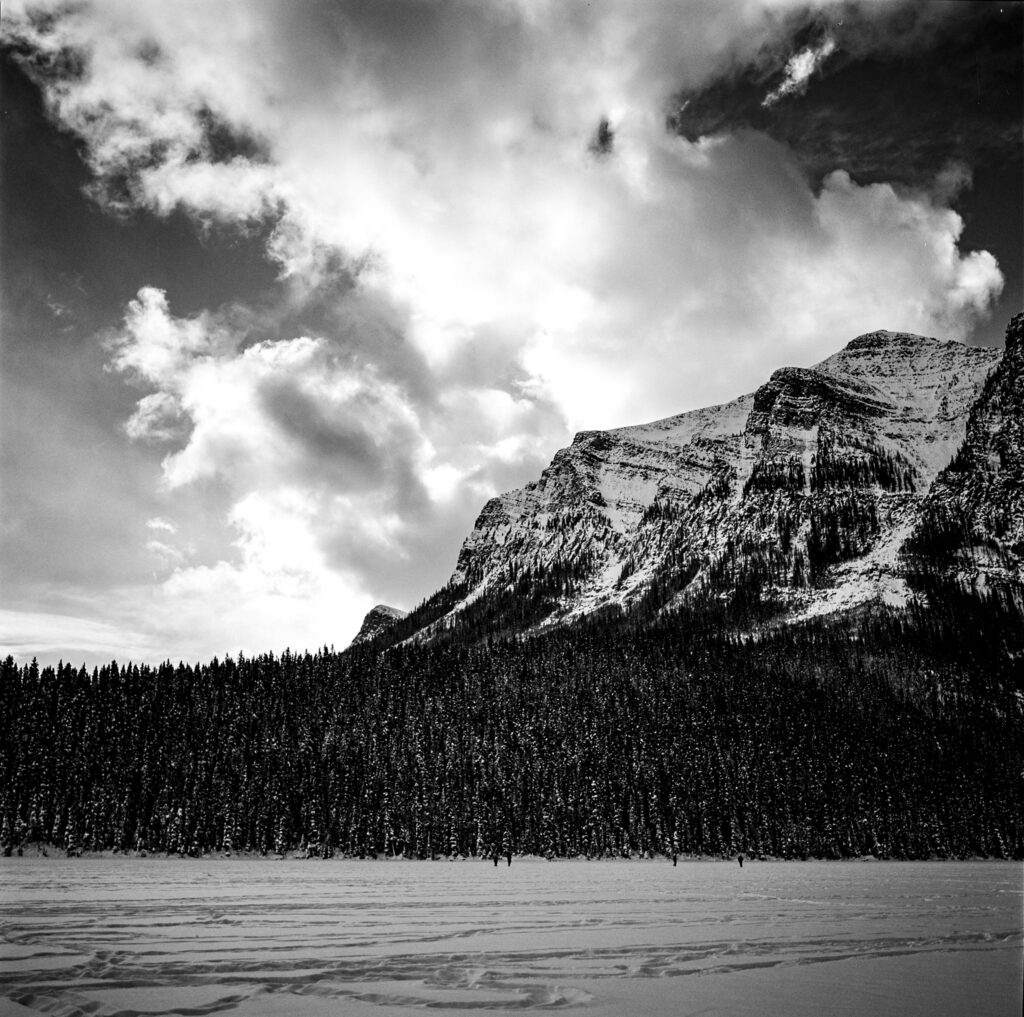
Subsequently, I shot a handful of rolls of XP2 and it performed well, but I wasn’t consistently able to repeat the spectacular results I got that first day at Lake Louise. When I started to drill down into my Lightroom Library for Part 1, I realized that EVERYTHING I shot that day looked amazing, including the XP2, but also Tri-X, Ektar, Kodak 200 Gold, Cinestill 400D, and Portra 400. So maybe it was down to the ‘Lake Louise Light’!
This shot on 35mm Tri-X has a completely different look and feel — it’s later in the day and the clouds were starting to move in, but the contrast, detail and grain structure are completely different, as is the ‘feel’ — the image on XP2 feels very crisp and contemporary, while the Tri-X feels kind of timeless, despite having more contemporary details in the frame like iPhones and 21st Century winter wear.
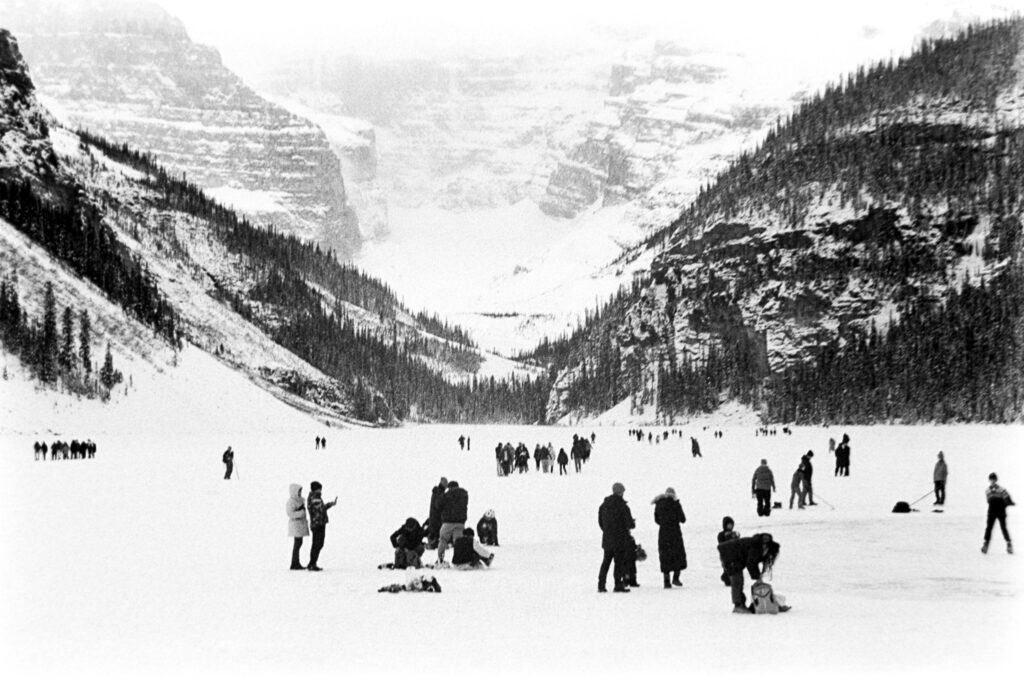
That I love both of these shots is at the core of my emerging theory about b&w and still film shooting in general. There’s no right or perfect choice, but a large array of options that will give you a vast range of different subtle or not-so-subtle looks and feels.
The next major ‘learning’ was to try to make some kind of sense of where different film stocks resemble each other and where they diverge and how I might ultimately use them creatively. I started to think of them falling in certain ‘lanes’ across the major brands. So here’s a completely subjective and non-scientific attempt to group my favorite b&w stocks into different types, think about what shooting situations they might be good for, and when possible, rate my favorites.
THE FINE GRAIN 400’S
Being able to deliver a fine grain result while shooting at 400 ISO offers incredible versatility in all kinds of weather conditions and all kinds of different shooting situations. So it’s not surprising that this is one of the most crowded and competitive sections of the monochrome film marketplace. All of the major labels have their offerings, and Ilford has more than one, including Delta 400 & XP2, which I shot along with Kodak TMax 400, Rollei RPX 400 and Kentmere Pan 400. From my non-scientific analysis, Ilford XP2 and Kodak TMax 400 have the finest grain; I think that is what attracted me to XP2 in those early days. But as I’ve gotten deeper into film photography, my taste has shifted a bit, and for me, Delta 400 might be the ‘Goldilocks Chair’ of the fine grain 400’s — great contrast and detail, super sharp, but perhaps a tiny bit of grain that gives the stock a subtly warmer, more film-like look to my eye.
Delta 400 might be the closest to a ‘when in doubt’ stock for me; the one I’d load if I wasn’t sure of the conditions but wanted to be very sure of coming away with a strong high quality result with broad appeal. It’s an awesome choice to shoot in a very controlled situation where you want to feel the volume and texture of a Henry Moore sculpture.
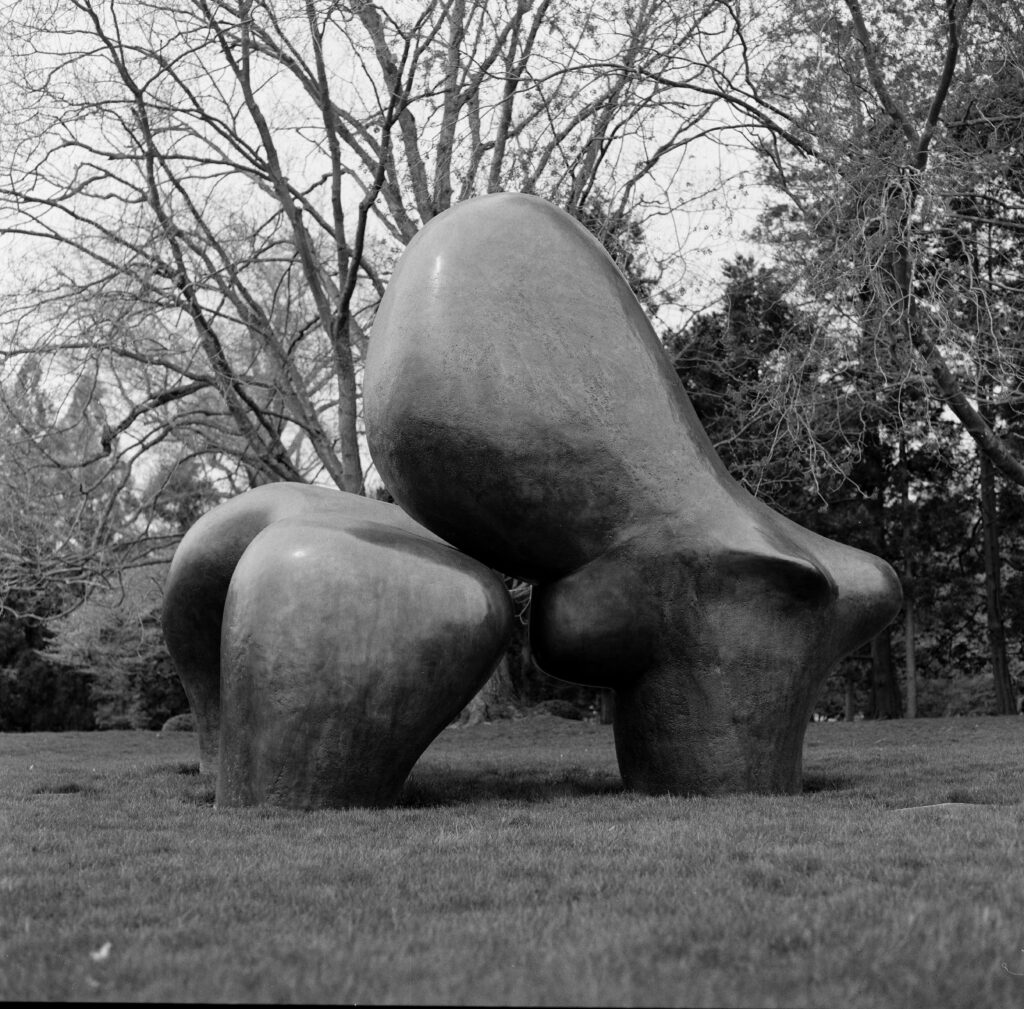
Delta 400 is also right along with you when the party is getting started, like here at NYC Pride, where I pushed it a couple of stops.

Kentmere Pan 400 is a relatively recent discovery, which I only picked up in the course of doing Part 3 of this survey. But I have to say, I’m pretty impressed with the early results and feel like it gives its Harman Technologies stable mate a serious run for the money at a fraction of the cost!
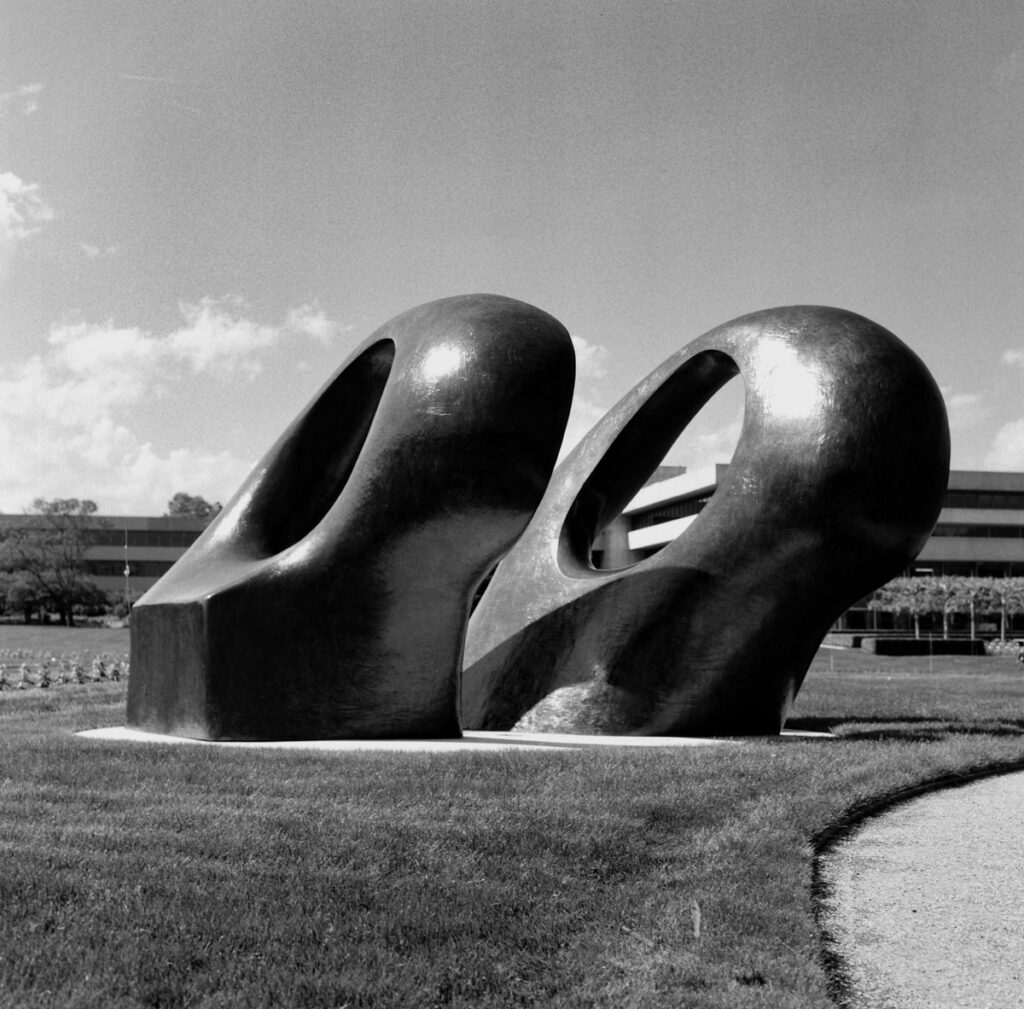
It also looks great when you push it a couple of stops. Based on an admittedly small sample, I might even prefer it to Delta 400 under those conditions.
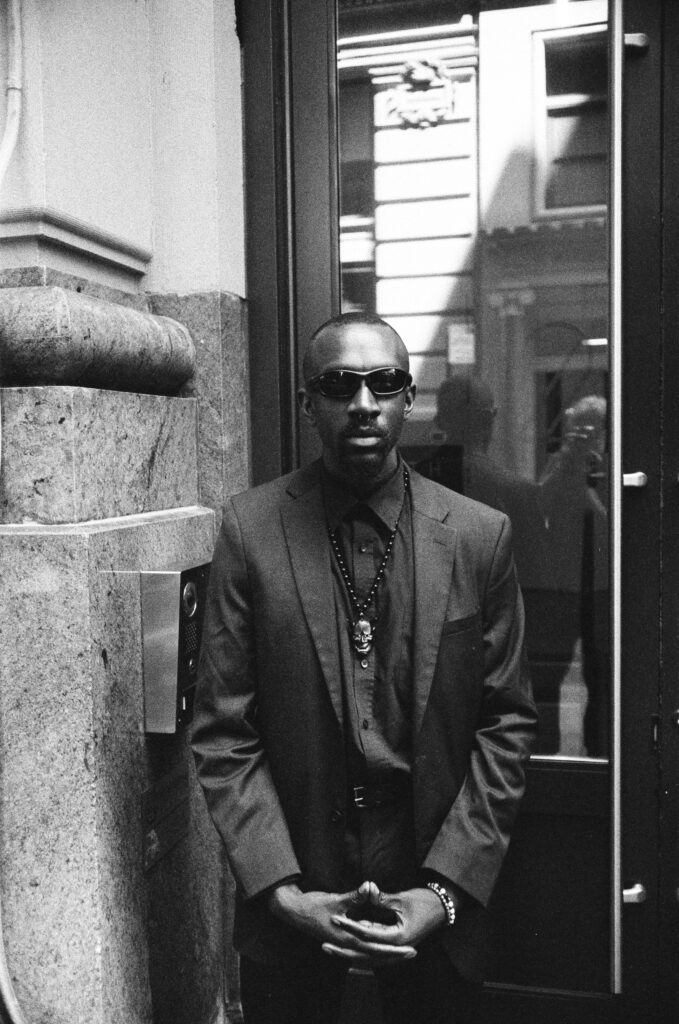
I think any of the fine grain 400’s are great options to get really strong results. But for my personal taste, I’m down to Delta 400 as the ‘best in class’, but count myself as officially ‘Kentmere Curious’ and am eager to explore that film more in both 120 and 35mm.
The ‘Classics’
Tri-X and HP5 are among the most popular film stocks on the market and both have been around in some form or other for eighty plus years for very good reasons. They feel like the entry point for many/most photographers who decide to shoot in monochrome, and some people never feel any reason or need to leave. I may have been one of those photographers if not for some early ‘hardware’ issues with vintage cameras that made me prematurely blame the film stock.
In a win-win situation, I started to be more adventuresome in my choice of b&w stocks which led to this survey, and after moving away from Tri-X for a while, I re-discovered it when I loaded an old roll I had on hand to test out a new lens (the Voigtlander Color Skopar 28mm f3.5.) Now both Tri-X and HP5 are in full rotation as great options, especially if I’m looking for something with a bit of a documentary/journalistic feel.
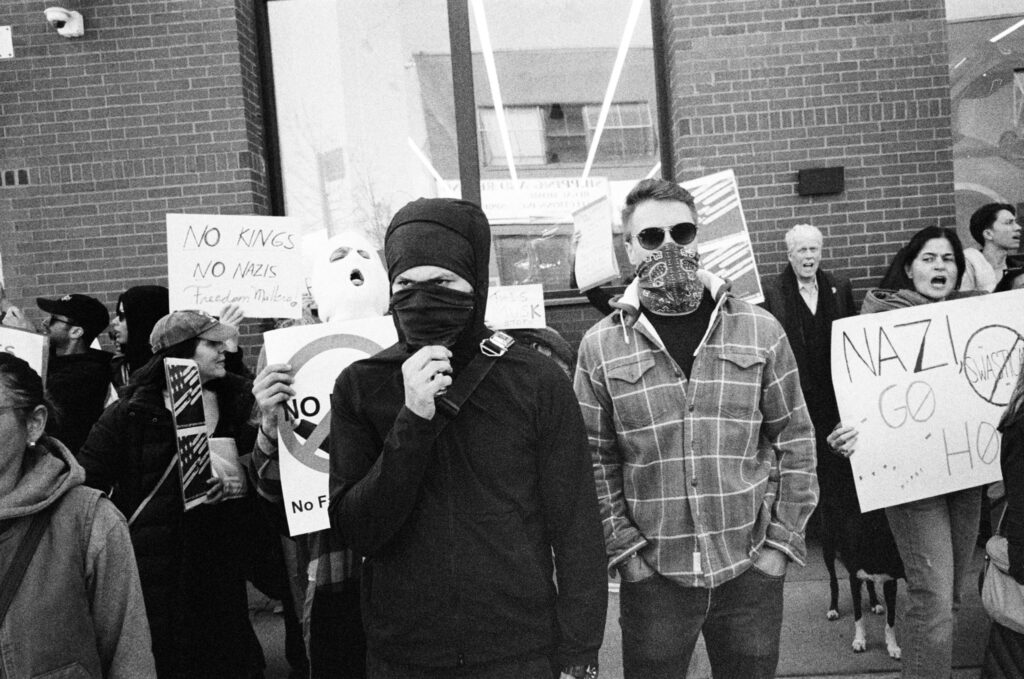
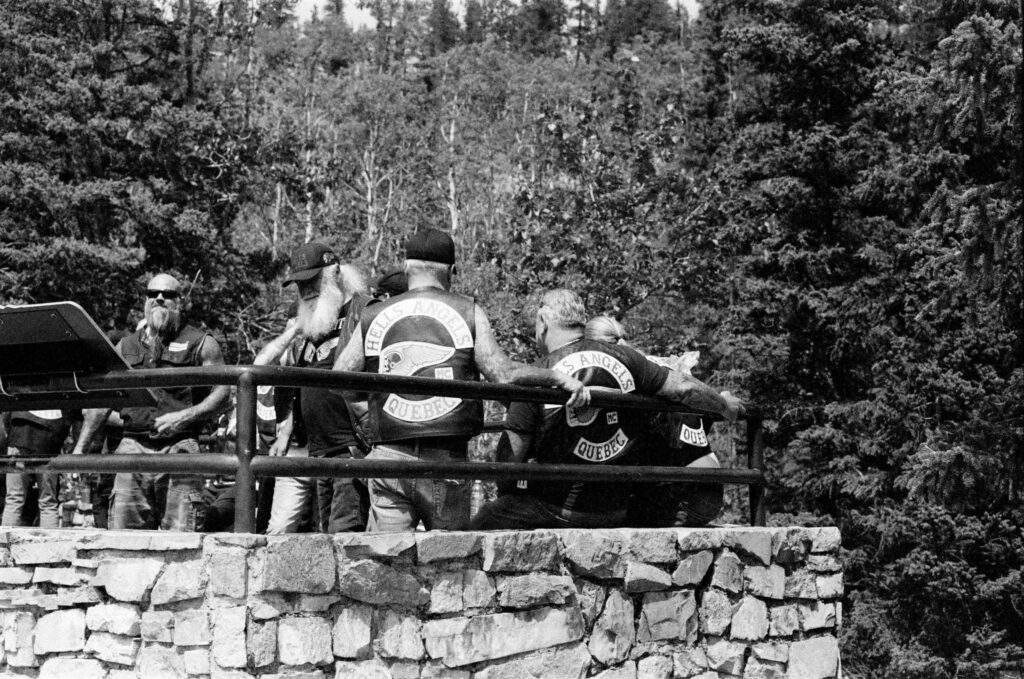
But I think they are also great for all kinds of shooting situations where you like a nice amount of contrast with deep blacks and bright highlights, but aren’t put off by a bit of grain.
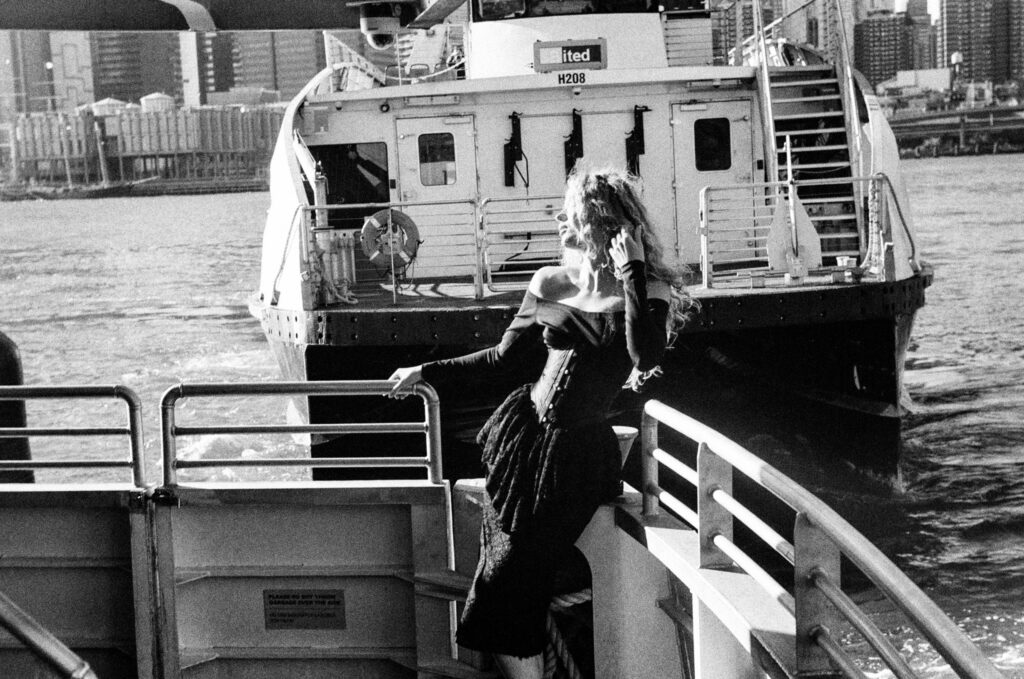
If you want a classic look, I’m not sure I see a creative reason to move past the O.G.’s of Tri-X and HP5. I’m sure there are lots of more experienced photographers than me who can champion the virtues of one or the other, but for me it’s a coin toss.
Fair Weather Friends
My early days of shooting with these amazing vintage cameras were mostly about landscape because I happened to find myself in one of the most epic and beautiful landscapes in the world, the Canadian Rockies near Calgary. Shooting a gorgeous mountain tableau affords you the luxury of looking into the finer grained end of the ISO spectrum; if you are setting up a shot of a mountain that has been in the same spot for 50 plus million years you can afford to put the camera on a tripod and use a longer, or even a much longer exposure. Some of my best and favorite b&w landscapes are on slower stocks that delivered gorgeous results.
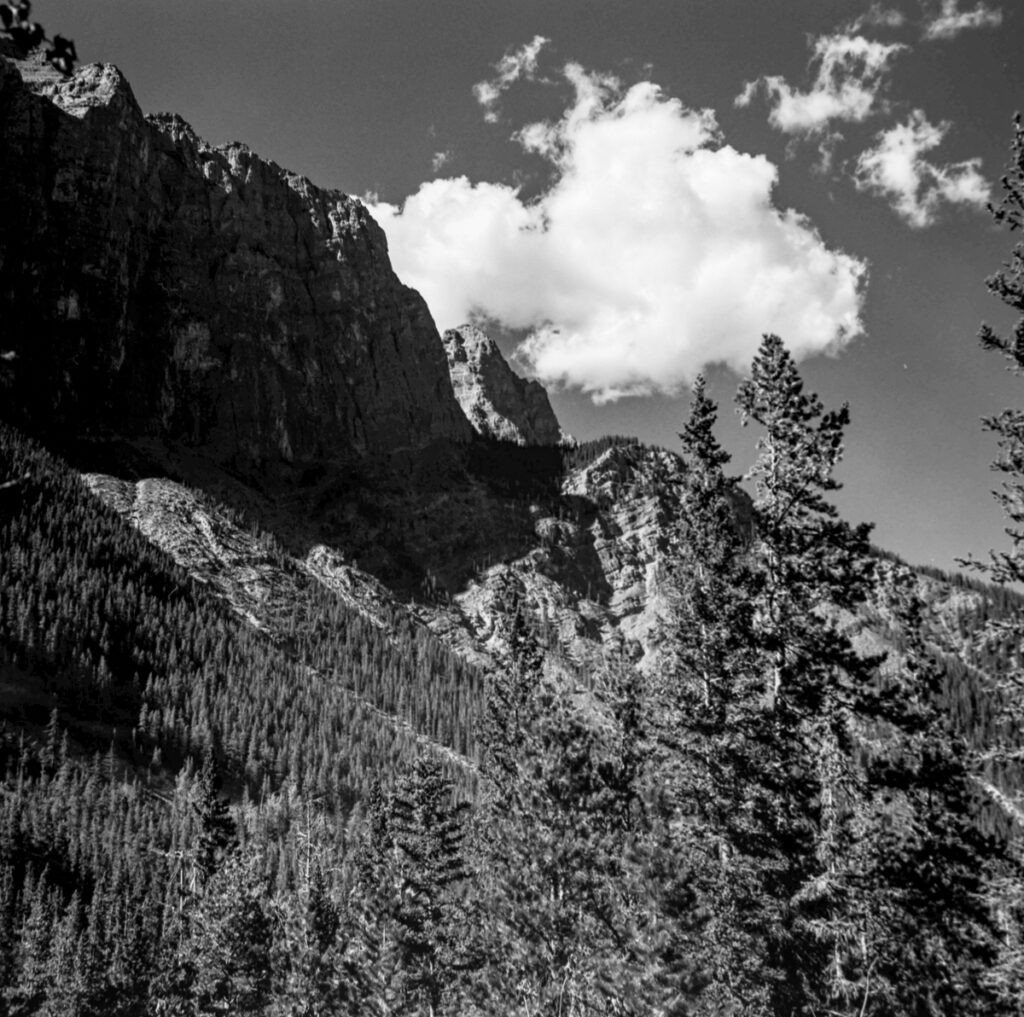
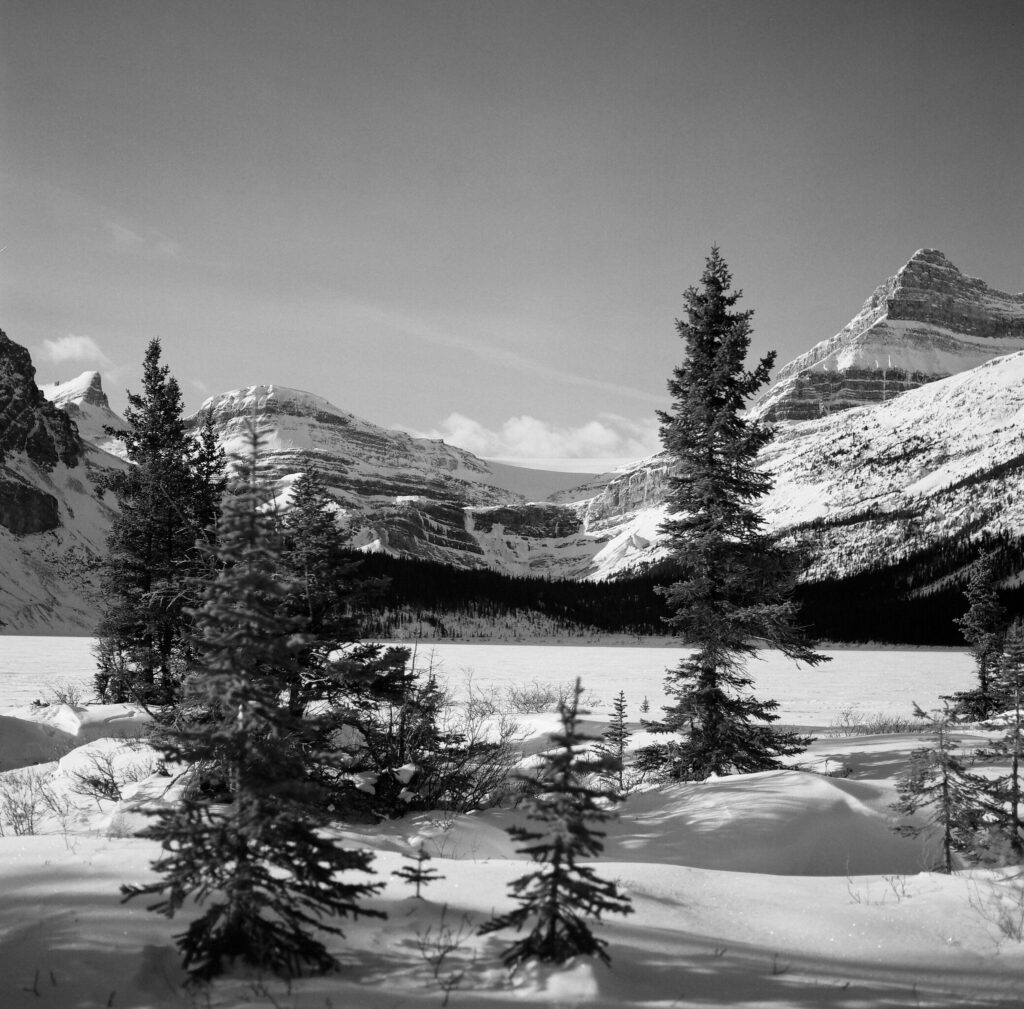
Delta 100 vs. Pan F Plus is a tough call — I think my sample size is probably too small and conditions & time of day might be a bigger factor than the film stock on images like these. Delta 100 might have a small advantage of being at a friendlier f stop, but I love the clarity and detail with these slower stocks shot through Zeiss glass on the Hasselblad. I don’t think I need to say much more!
Superfine
When you’re in the mood to go even deeper into ‘slow photography’ and have the luxury of either enough light or enough time and a steady tripod plus a cable release, Rollei offers a couple of 25 ISO b&w stocks.
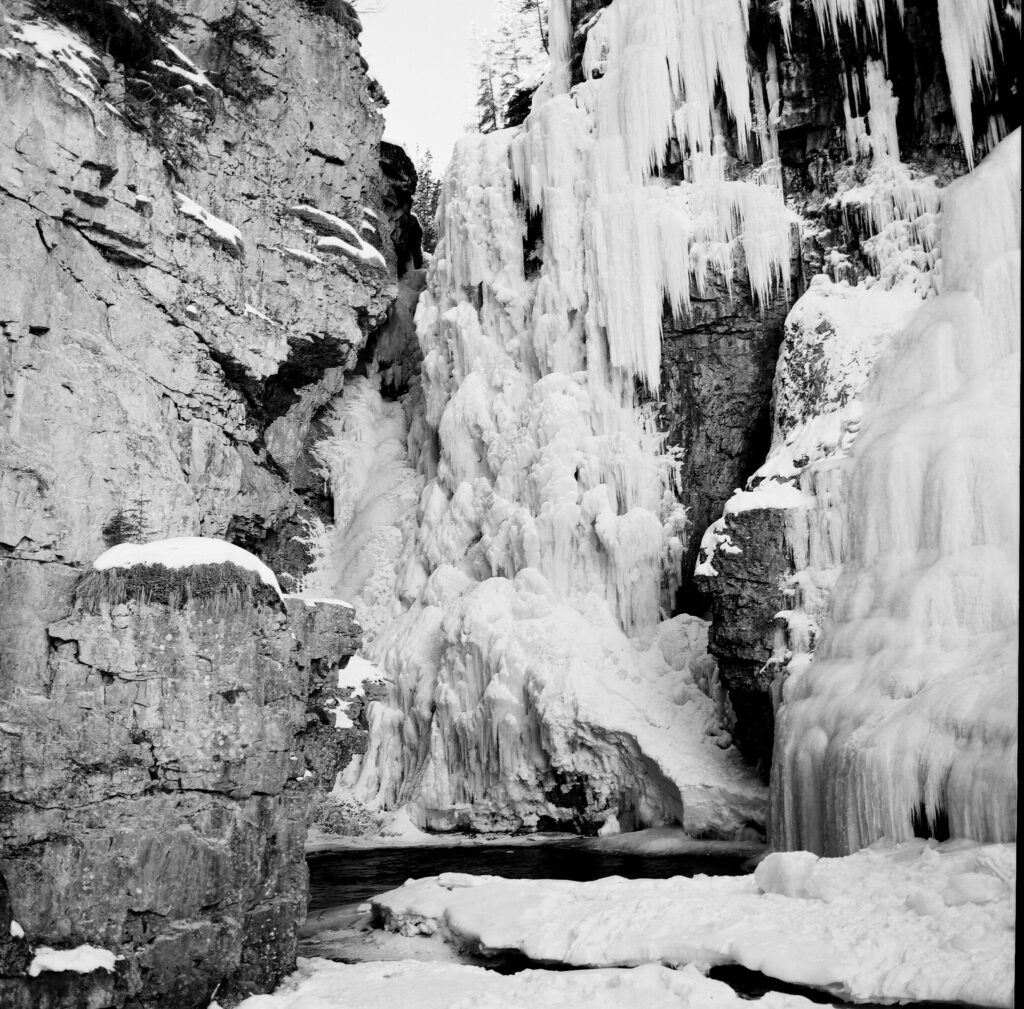
At ISO 25, these are clearly not your ‘every day’ stocks, especially if you like to shoot with filters. I had an orange filter on at Johnston Canyon and I think I was shooting something like a 1/2 second exposure in very bright sunlight.
I managed to shoot our dog Nico handheld by going pretty wide open with a very narrow depth of field.
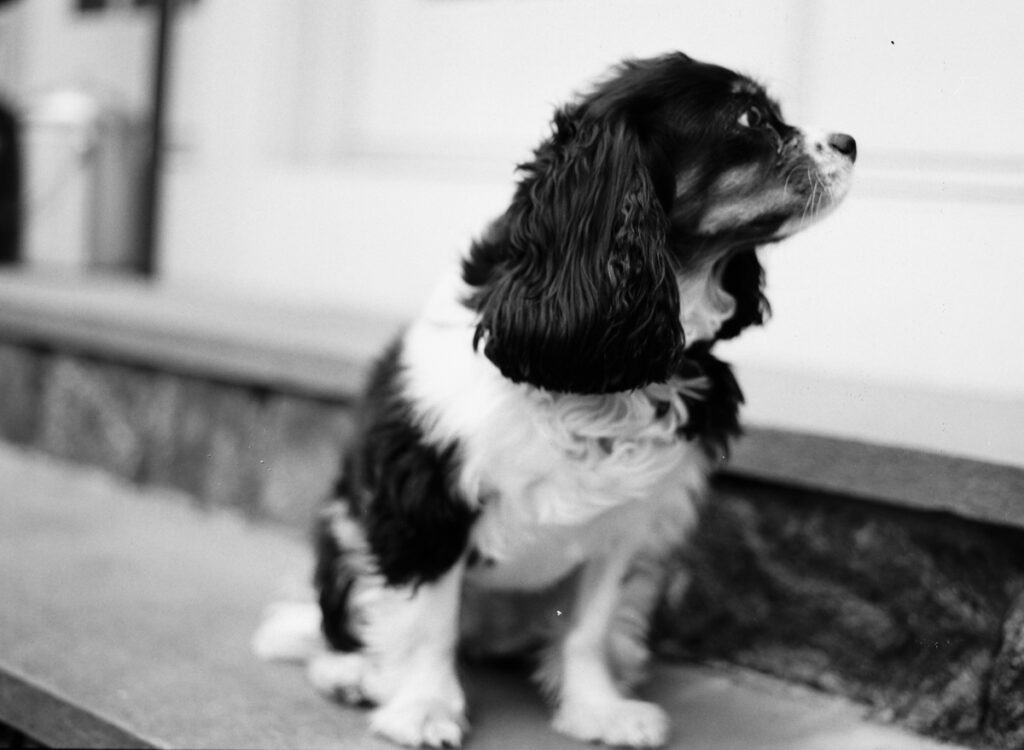
The level of micro details on the ice formations of the frozen waterfall or the fur on Nico’s ear are stunning. I think RPX 25 is a little more ‘clinical’ and Ortho 25 is a little ‘warmer’, which might give Ortho a slight ‘taste’ edge for me. I recently loaded another roll and tried it out for some NYC street shooting.
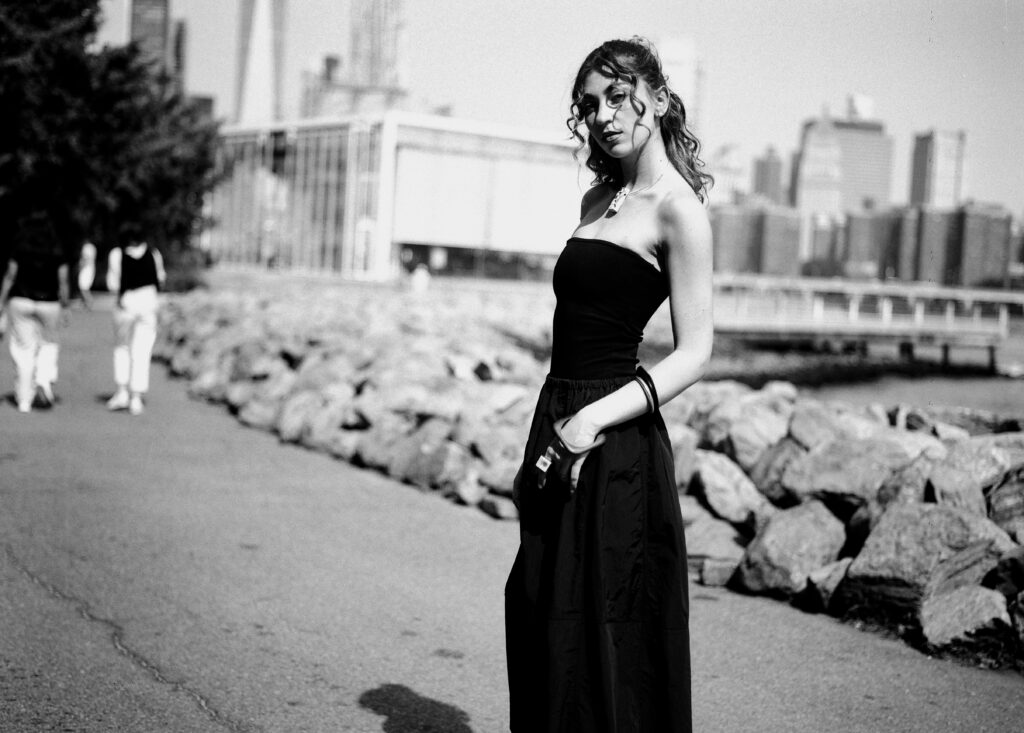
Even in fairly strong overhead light, I think the results with this lovely young woman I ran into in my neighborhood in Brooklyn came out looking quite good, with really fine grain and nice contrast.
Timeless/Period
I was struck by the quality of these shots of the ancient trees at the Rockefeller Preserve shot on Ortho Plus 80. They feel like they could have been taken any time in the last 100 years.
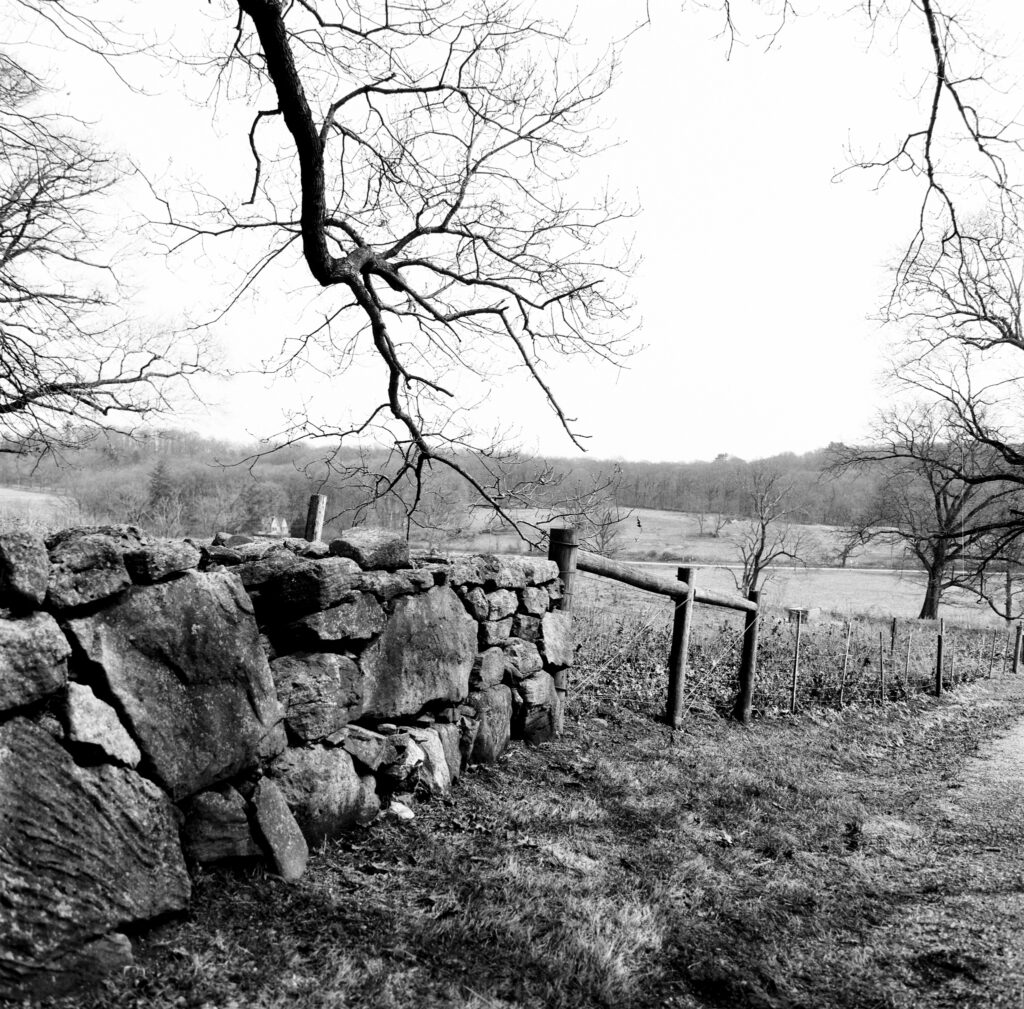
Ortho Plus 80 has a really interesting grain structure that gives a very distinctive look, but at the same time the level of detail is impressive.
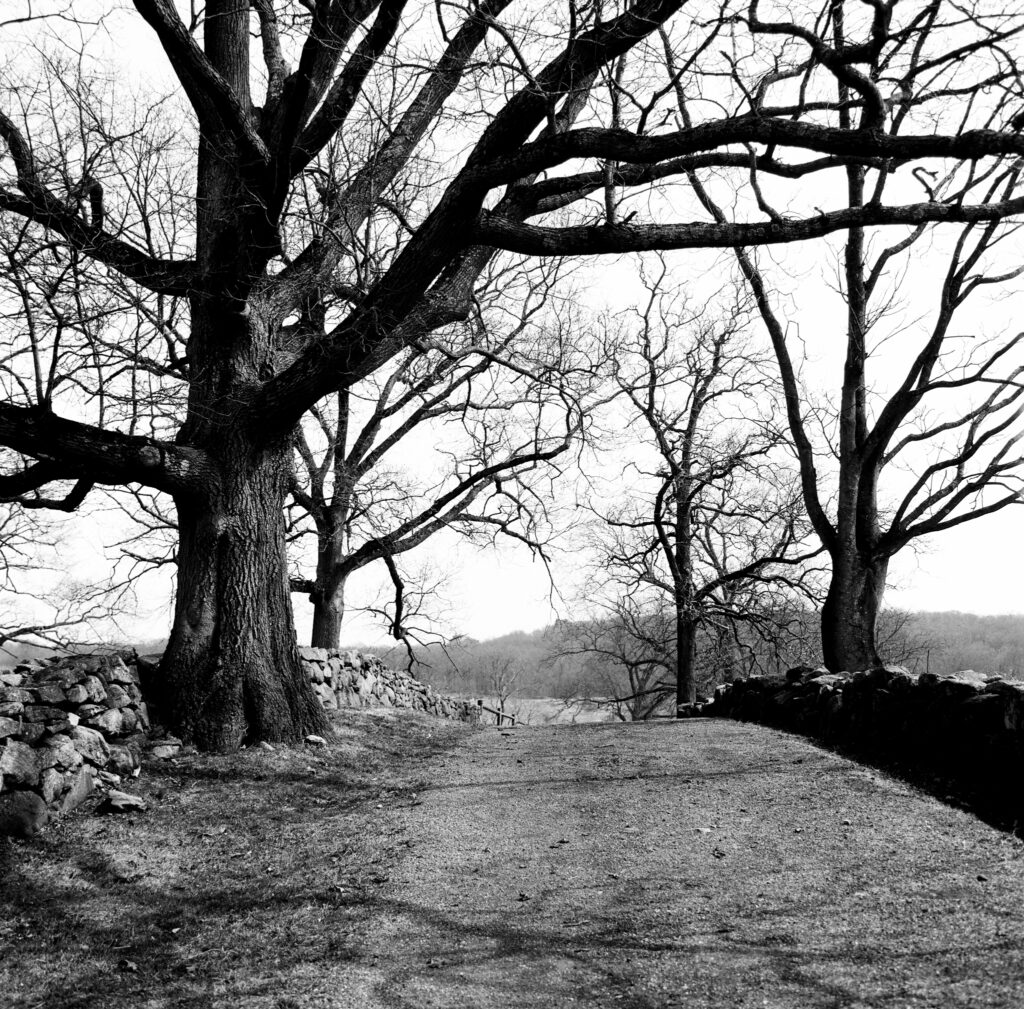
I’m keen to try more Ortho Plus 80, and I would definitely want to bring some if I were touring a location that is steeped in history. But since I’ve only shot one roll so far, I’d probably also bring a healthy supply of Delta 100. I think Delta 100 makes even shots with contemporary details like 21st Century cars and buildings feel kind of timeless…
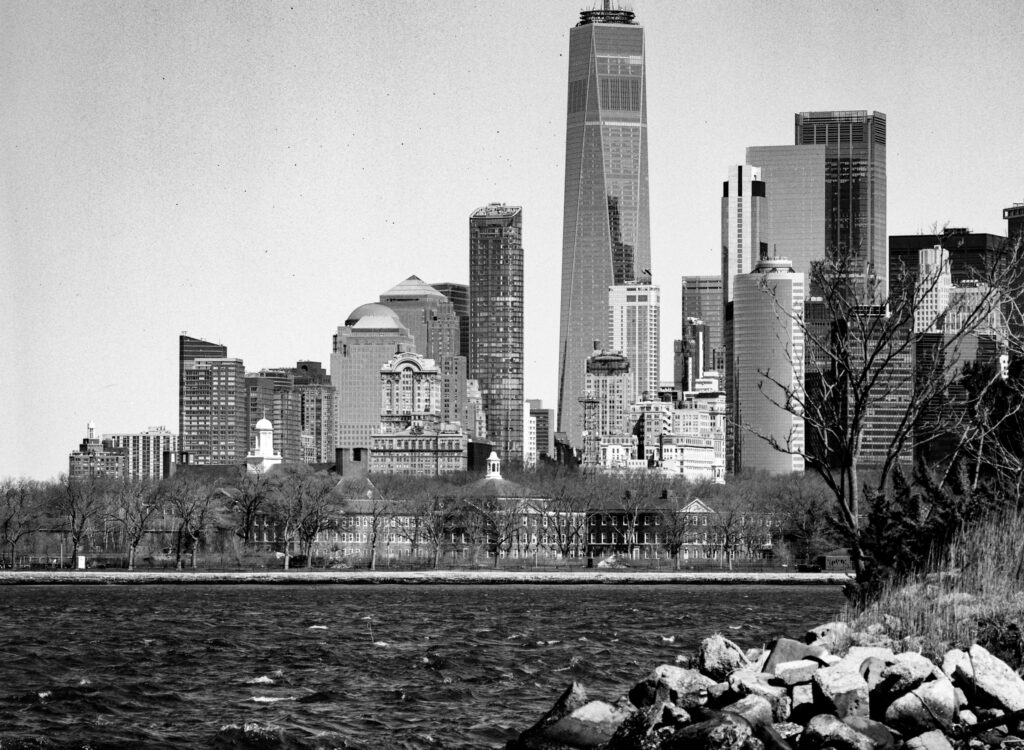
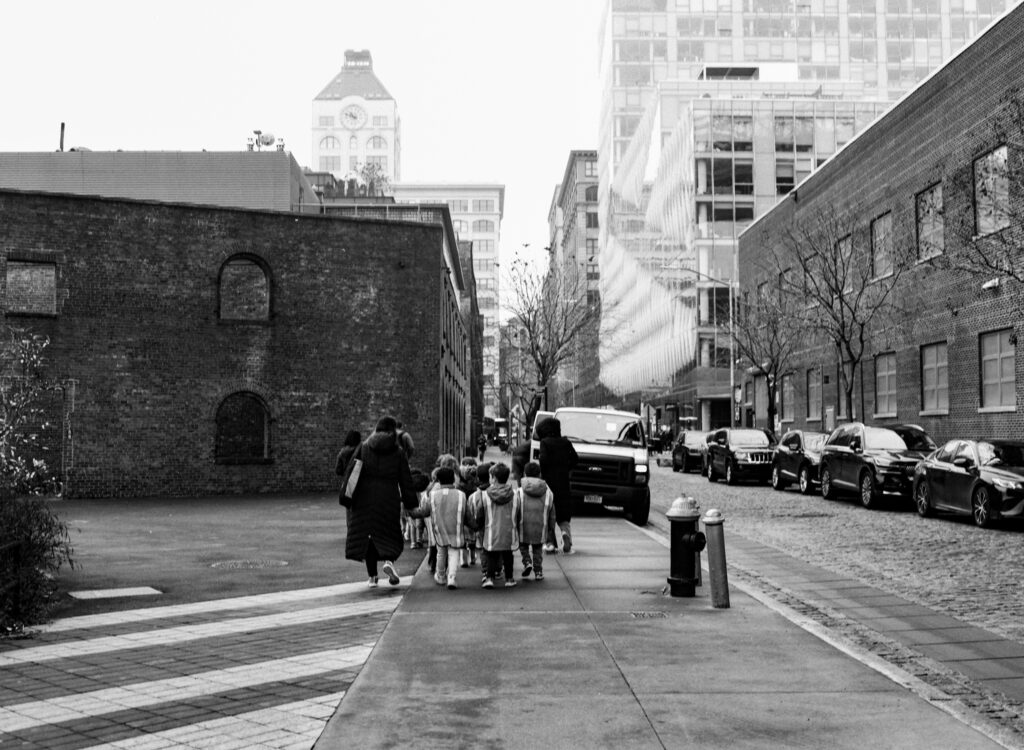
Modern/Contemporary
If you’re keen on more of a modern, crisp, contemporary feel, I don’t think you can go wrong with either Ilford XP2 or Kodak TMax 400.
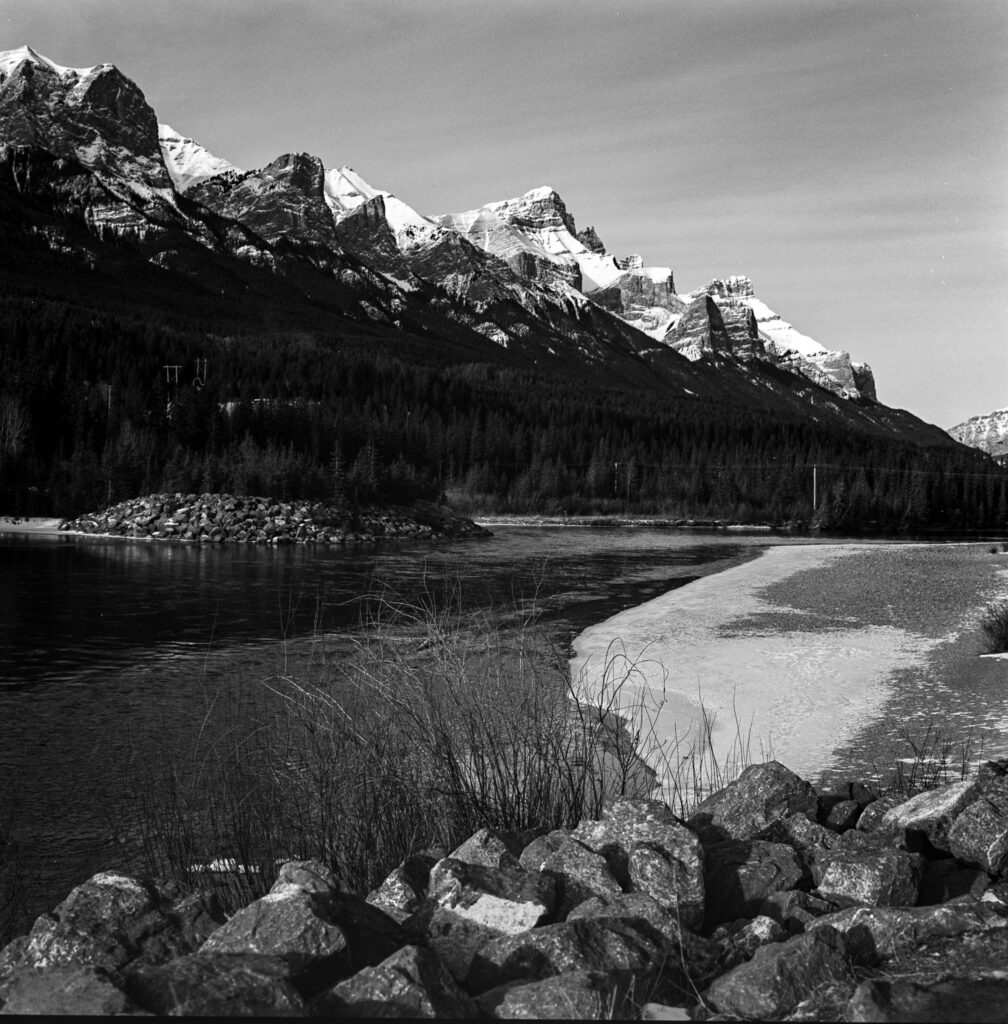
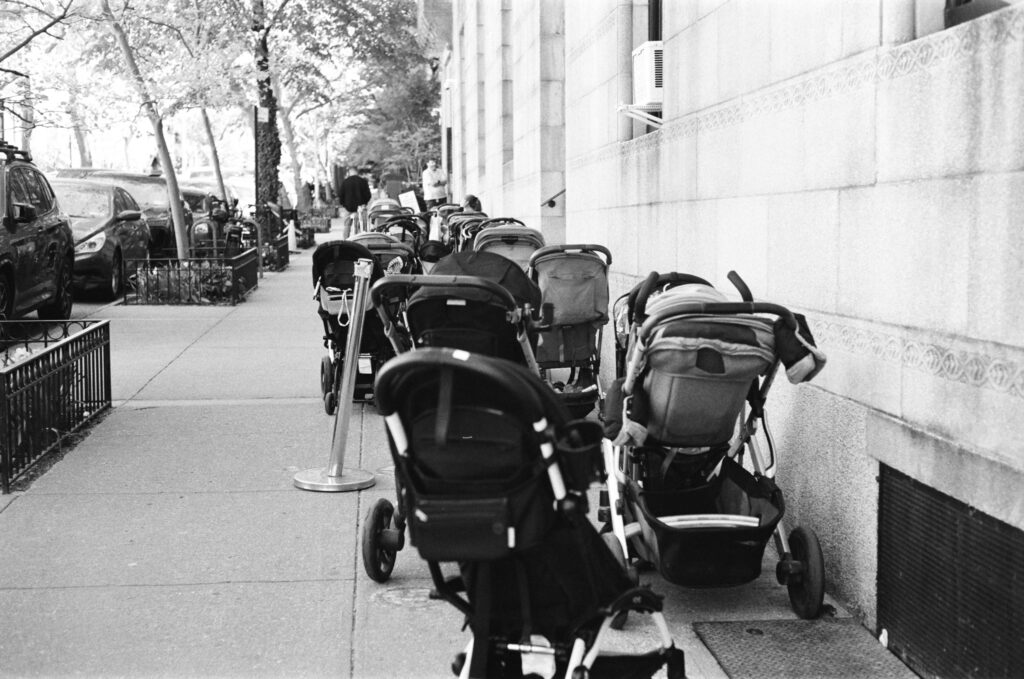
I’d probably lean to XP2 for this application, it might have a tiny edge in having a cooler, ‘crisper’ feel that feels a little more contemporary to me, while TMax feels more like a 400 ISO film that delivers results on par with a 100 ISO stock in terms of sharpness and grain, but is possibly a little cooler and more clinical to my eye than the Delta stocks.
Fine Art/Creative
For NFL fans, Blackbird is the ‘Mr. Irrelevant’ of my grand tour, literally the final b&w film stock to make the cut. I spotted a roll while I was turning in some film at Photodom, a new black-owned boutique lab in NYC. It sat in my fridge for a couple of weeks until I was about to hit to the deadline for getting it into Part 3. I loaded in on NYC Pride Day, more because I wanted to get it into the lab the following Monday morning than out of any plan or creative strategy.
Shoot a 64 ISO film at box speed going into one of the more chaotic shooting situations I’ve put myself in was, um, counterintuitive? Conditions were tricky and I was metering at ISO 15 to compensate for the filter, and to round up at least a stop, as is my habit these days. (Or is it round down?) I didn’t have particularly high hopes and it felt more like crossing something of a list when I finished the roll of Blackbird and loaded something I really wanted to shoot that day.
However my attitude changed completely when I saw what came back from the lab!
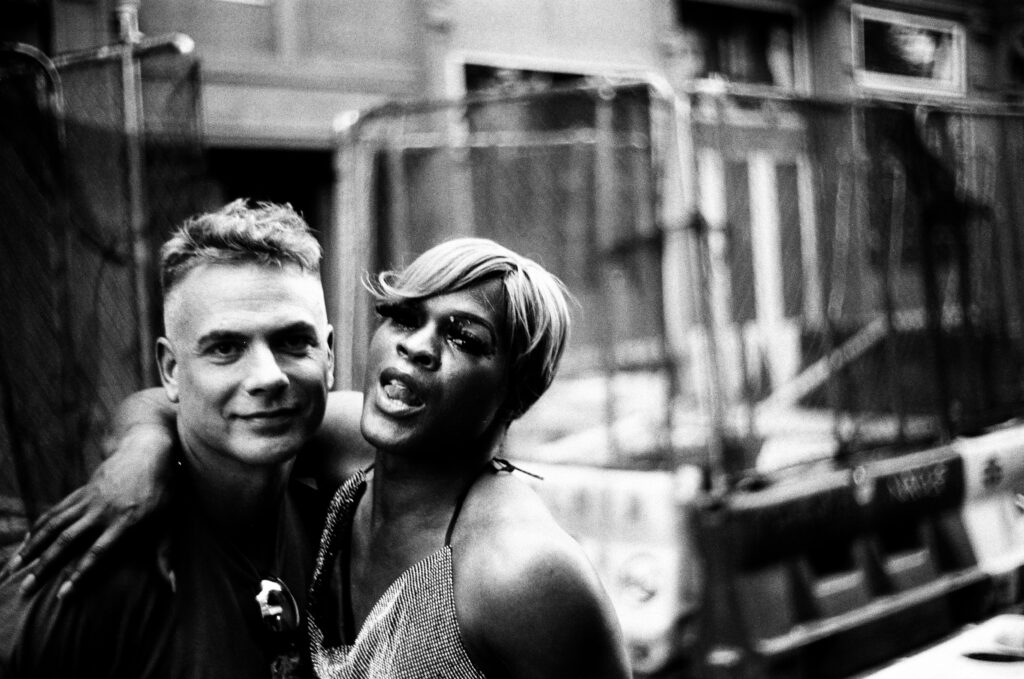
There may be some recency bias here, but I really love the look of Blackbird! These shots have a kind of depth and vibrance of tone that I think could be really exciting for situations where I’m looking for more of a ‘fine art’ look and feel. I wish they made it in 120, as I think it would be a pretty exciting film to shoot with the Hasselblad.
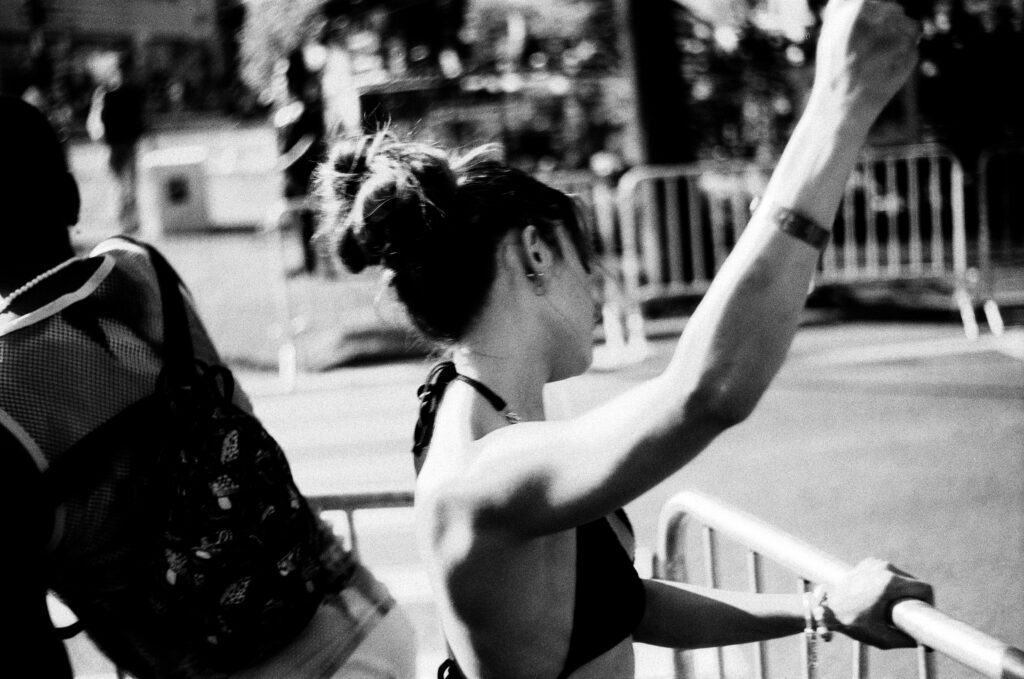
Uh oh, I may be falling in love with a film stock that is hard to get! Which reminds me of my high school dating strategy… Blackbird doesn’t seem to show up at any of the major NYC outlets or on-line retailers. Hopefully the people at Rollei will see this and start turning out more Blackbird in both 35mm and 120!
But if that doesn’t happen, my other options for a Fine Art look are not to be sneezed at, including Ilford Pan F Plus 50.
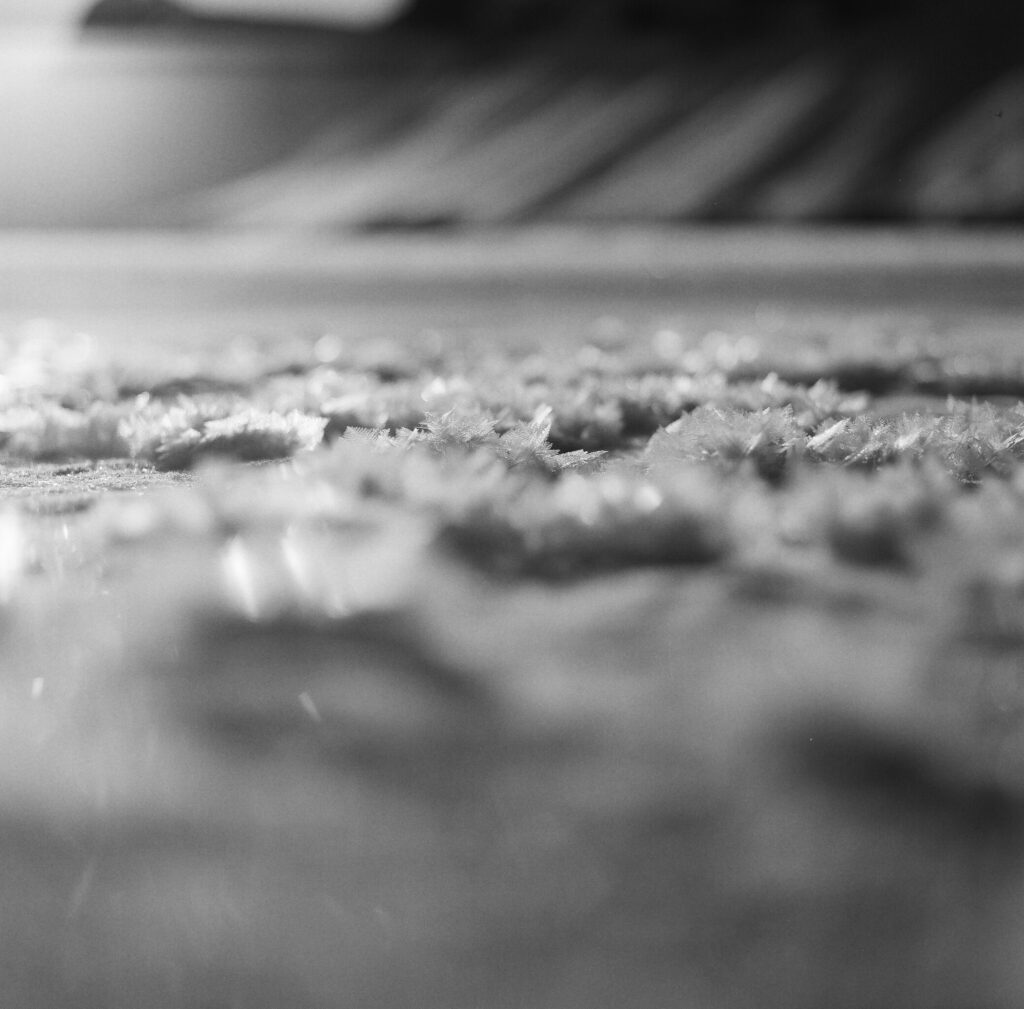
Or Rollei Retro 80S, which shares some of the distinctive ‘dark glow’ to the blacks which I really like on Blackbird and haven’t seen on stocks from other brands.
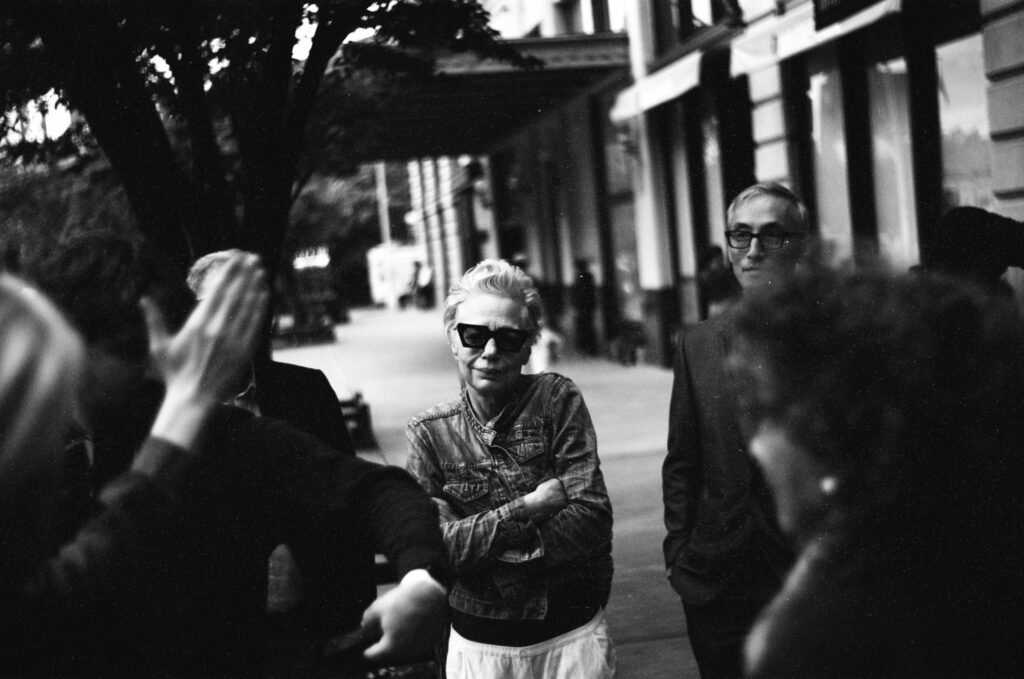
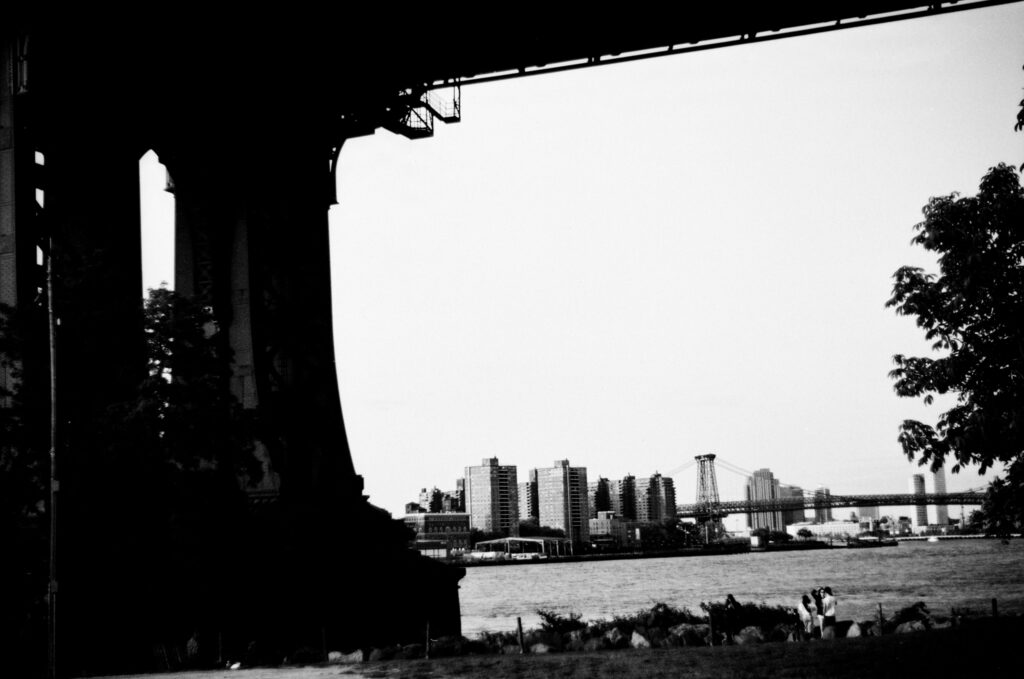
One of my takeaways is that the sub 80 ISO Rollei stocks — Ortho 25, Blackbird and Retro 80S — are some of the films I’m most keen to keep shooting coming out of this experience, but they are decidedly in the High Risk/High Reward category. If you miss exposure they can go from amazing to unviewable without stopping at ‘okay’, and it’s not hard to have focus challenges when shooting handheld at a suitable aperture/shutter speed combo. But when I hit it right, they are among my favorite ‘portfolio’ shots, if I had a portfolio…
Honorable Mentions
There are a number of really good stocks that aren’t quite fitting neatly into any of the ‘lanes’ that I’ve identified for this post. This might be because I might just prefer some other stock a little more in a certain category. But probably the overriding reason is that I’ve only shot a roll or two of a lot of these film stocks, often on the Hasselblad. 12 frames really isn’t enough to get much of a sense of the range or what the most ideal use for any film stock might be.
Rollei RPX 400 feels a little like it’s falling ‘between two stools’ of Fine Grain 400’s and the Classics; it’s a little grainier than Delta or Kentmere 400, but it looks a little finer-grained than Tri-X or HP5. It has a reasonable price point, but it’s not as cheap at Kentmere Pan 400. It might be a little like the student who is pretty good at everything, but not quite the best at anything. But that may be the kind of student I was, so I wouldn’t hesitate to load some RPX 400 and give it a shot.
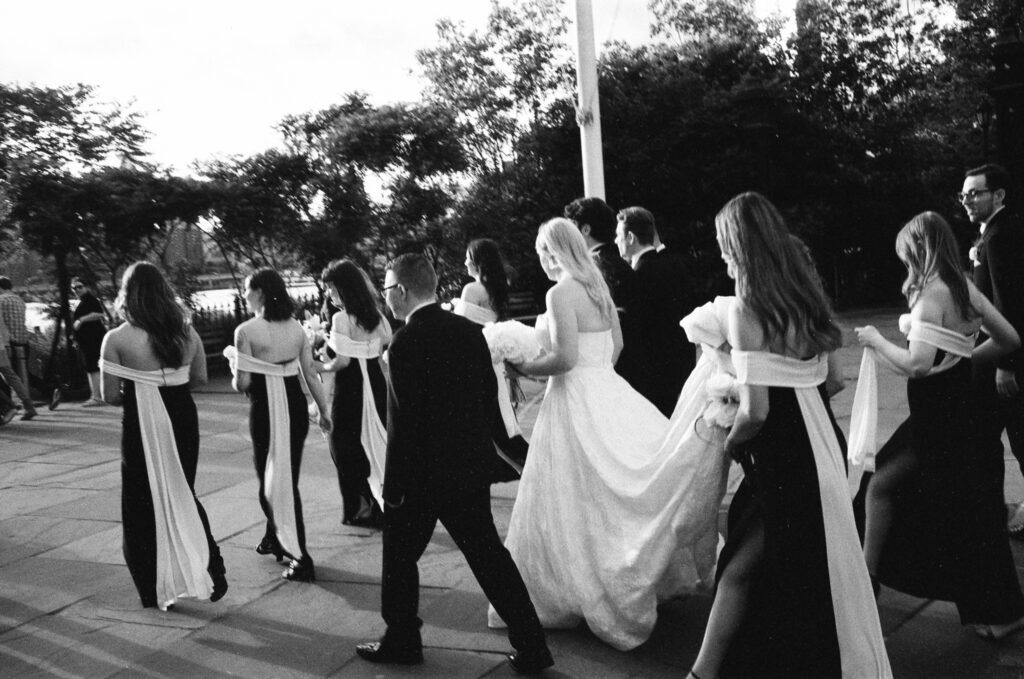
I’ve only shot one roll of Cinestill XX on 120 and liked it. But I’m not quite sure of the right situation to use it. 250 is an odd ISO slightly off the ‘normal’ options on the dial of a light meter and falling between the finer grained choices at 100 or lower, and the faster stocks of 400 and up.
I’d welcome input from the forum on where and when they like to shoot with XX, but I think I should shoot a roll of 35mm and see what I think. I like the Cinestill color films a lot, so I have a feeling I’ll like XX after I get to know it better.
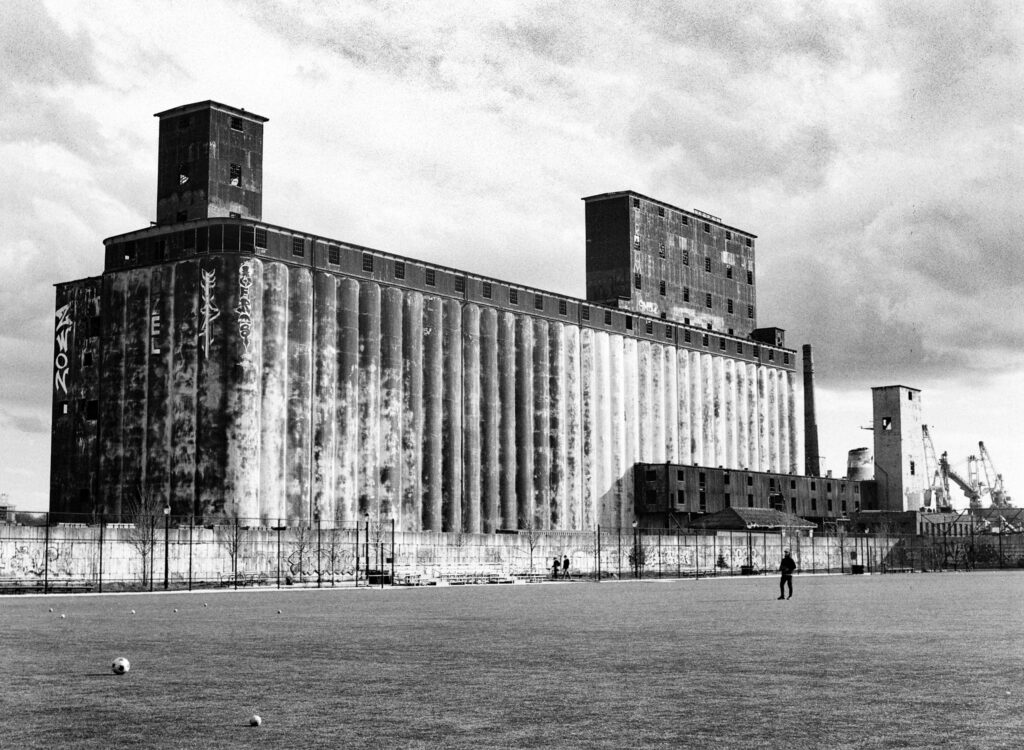
I think this shot shows that Rollei RPX 100 is a pretty strong stock, but I shot this around midday and the quality of light and the interest in the sky just weren’t as photogenic as something like the shot of Mount Grassi on Delta 100, which may not be fair to what could be a wonderful stock on a better (time of) day with a better photographer. I do like the level of detail in the shadows and the sense of depth and dimensionality of this shot of a frozen bend in the Bow River.
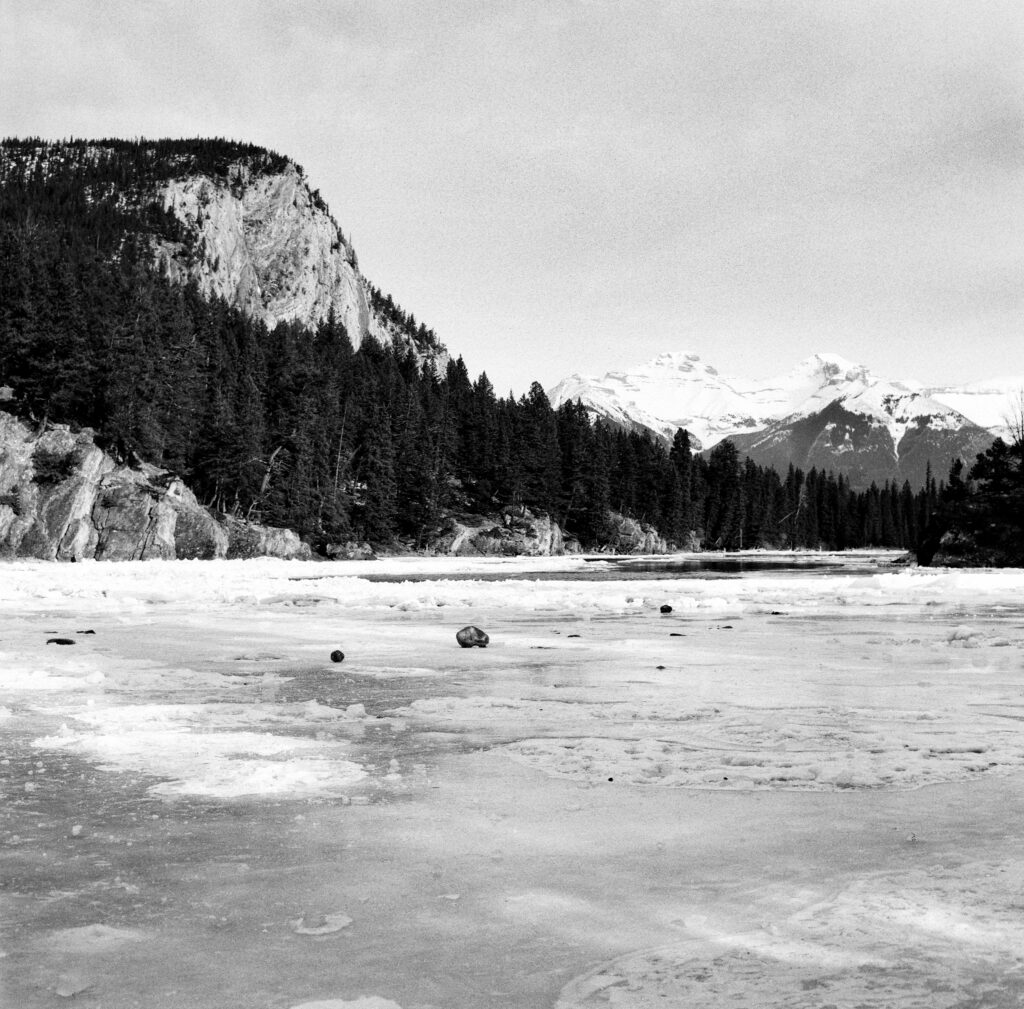
I’m so new to shooting the Kentmere stocks that I don’t think I have a large enough sample size to judge Kentmere Pan 100. But I definitely think it’s worth continuing to shoot more of it, if only because it costs about 50% of the major brands!
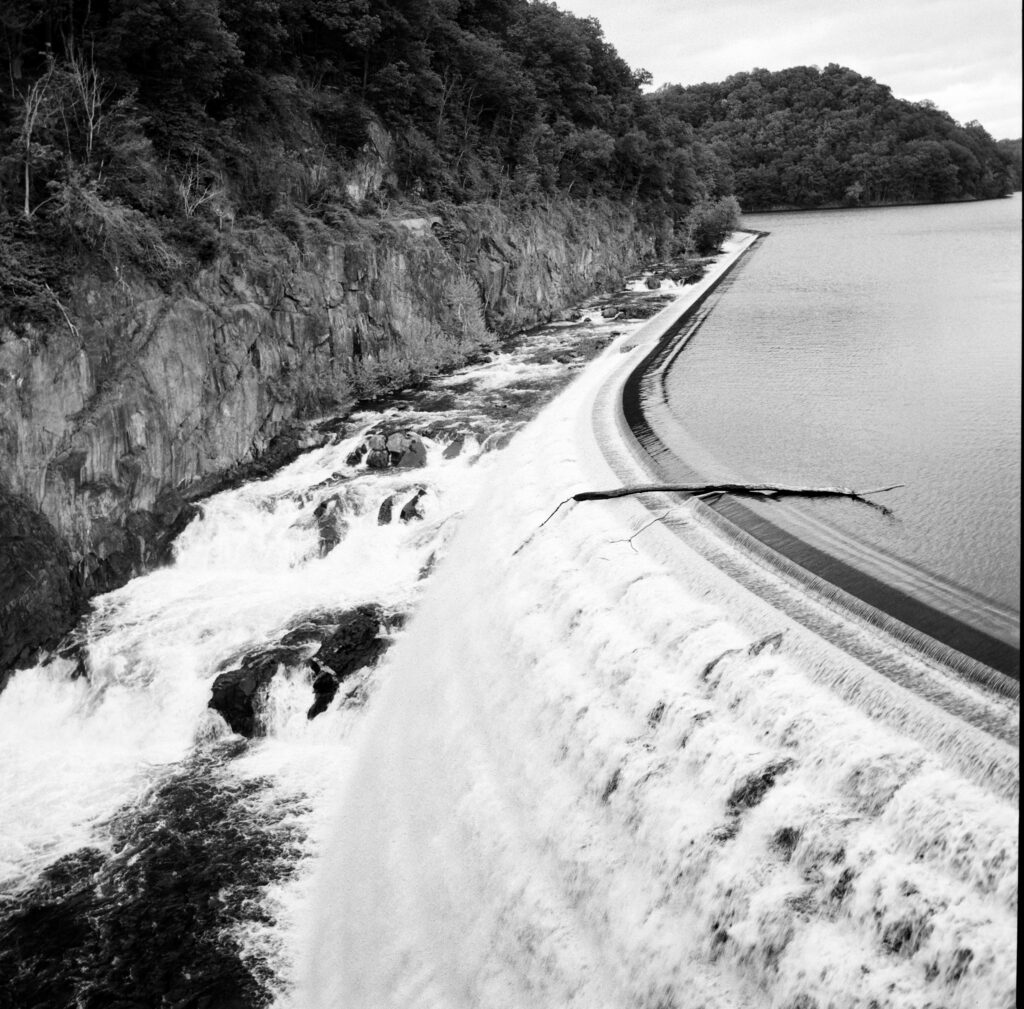
I’m also not quite sure where I’d categorize the newest stock I shot for his survey, Kentmere Pan 200, which was released on May 8, 2025.
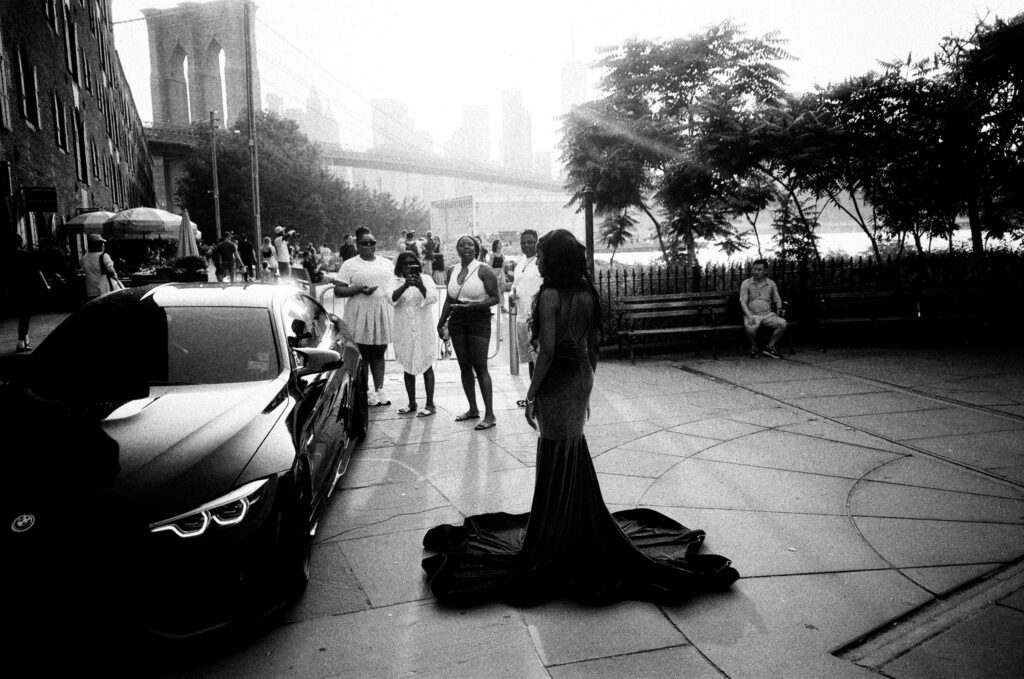
I really like this shot because of the moment if captures — a moment of high glamour but for the benefit of some nice looking every day people (homage to Sly Stone.) This shot tests the limits of the dynamic range of the film but I like the contrast between the strong dark foreground shapes of the woman in the elegant gown and the high end car against an almost blown out Brooklyn Bridge and NYC skyline with a bit of sun flare.
I need to shoot more Kentmere Pan 200 to see where it lands, whether it’s Fine Art/Classic or Timeless, or something else altogether. But I am liking the Kentmere line so much I think it’s worth putting it through its paces. And it’s exciting that the market for b&w film is strong enough that they are still introducing new products!
I think all of the Honorable Mentions are very promising stocks, and I’d be curious if anyone in the forum feels particularly strongly about the virtues of any of them that I might think about for times and ways to use them.
I also thought the 3200 speed films from both Kodak and Ilford are very good stocks and great for shooting in lower light situations. But I’m not 100% sure whether I see a creative, as opposed to logistical, reason to choose one of them and whether the price premium makes them preferable to pushing one of the strong 400 ISO films. Again, I’d welcome input from more experienced photographers on the forum about those films.
Yes, there are some stocks that I didn’t love as much as these that may not make it into my fridge any time soon, and a few that I’ll definitely be avoiding. But I think I’ll leave things well enough alone with those unnamed stocks for the purposes of this post and stick with praising the ones that I’m enthusiastic to try again. Which is still quite a few different options to choose from!
So there we have it! Coming out of this months long project, those are my leading ideas on what I think my favorite ‘Horses for Courses’ will be going forward. This has been a really fun journey down the rabbit hole of the world of black & white film emulsions. Not only have I discovered seven or eight film stocks that I really liked and may never have tried otherwise, but I feel like I’ll be making a more informed choice when I pick a lesser known film, as opposed to making a wild ass guess. It’s fantastic that there is such a wide range of options on the market that give so many different and interesting looks and feels!
I’d be interested in an informal survey in the comment section about your #1 favorite b&w film to load if you have one, and if reading this has made you want to try one or more stocks that will be new to you.
Technical Notes: These were all shot on either a Leica M3 or a Hasselblad 500CM. The lab work was mostly done at the same lab in Brooklyn (Photo Life), except for the earlier Canadian shots that were done at a home lab by a friend. I know, I know… For most of these shots, especially the more recent ones, I have been metering one stop below box speed, but processing at box speed. E.G, if I’m shooting a 400 ISO film, I set the meter at 200 (with additional compensation if I’m using a filter) but then process at 400. This systematic 1 stop overexposure has helped my results improve greatly since I started using the technique, which I learned from our 35mmc host, Hamish Gill.
On that note, I’d like to thank Hamish for his wisdom and encouragement and endlessly generous advice; I think my photography has improved immensely since I started contributing to 35mmc, especially in b&w! A good bit of this is down to Hamish, but also to the entire community.
Well, this has been amazing. It feels a little bit like I took an immersive course in b&w photography and learned a lot and ended up with some cool photos that I love!
The cover image, a reflected self-portrait was shot on the Leica M3 with the Summitar 50mm f2 with the Yellow/Green Filter on Delta 400 pushed to 1600.
Note: I generally try to avoid re-posting images that I’ve already shared on 35mmc, but for this re-cap/overview post, I’ve made an exception to this unwritten rule.
Share this post:
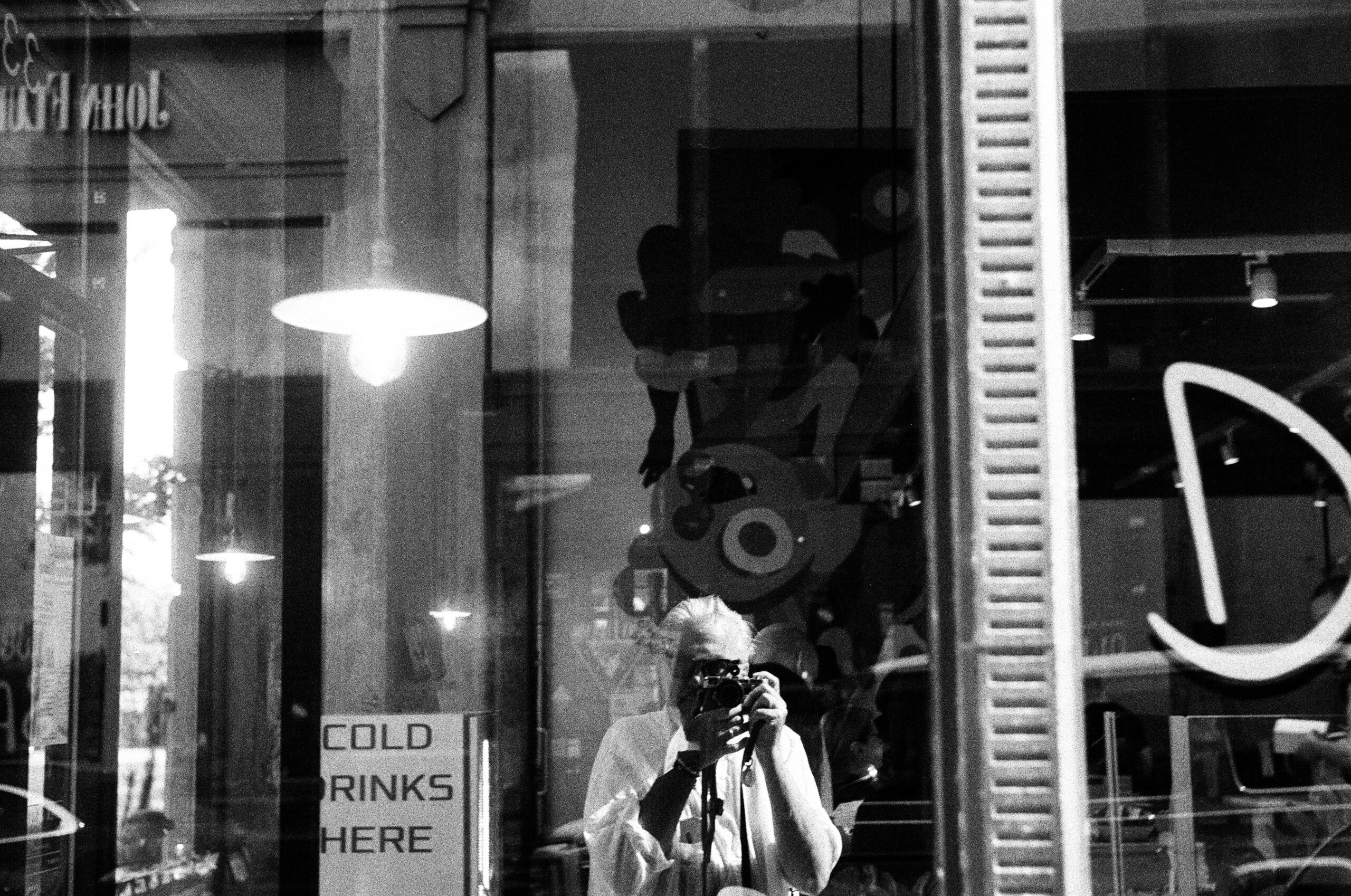
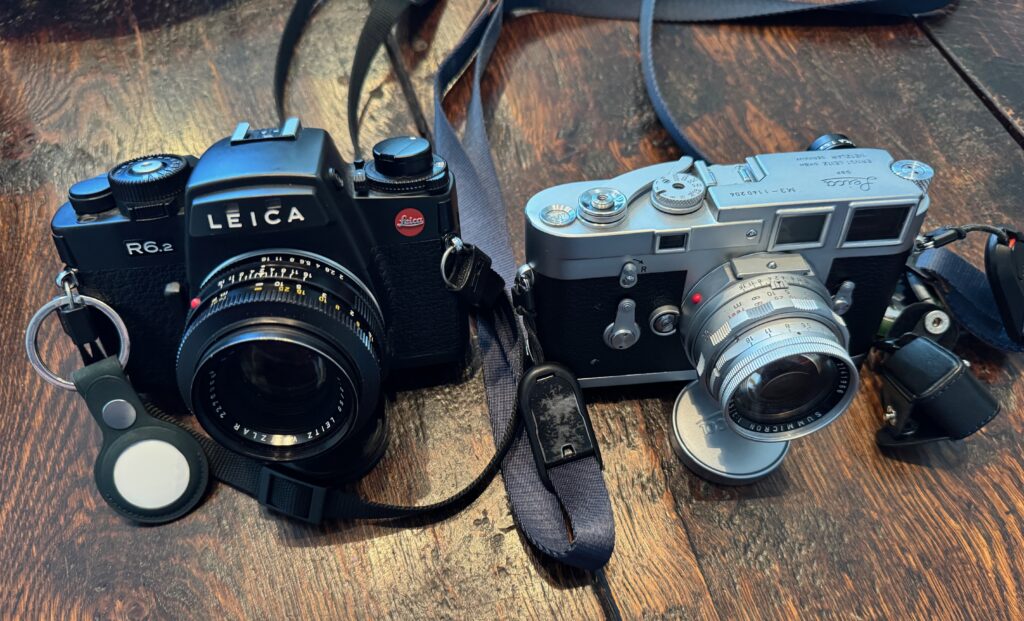
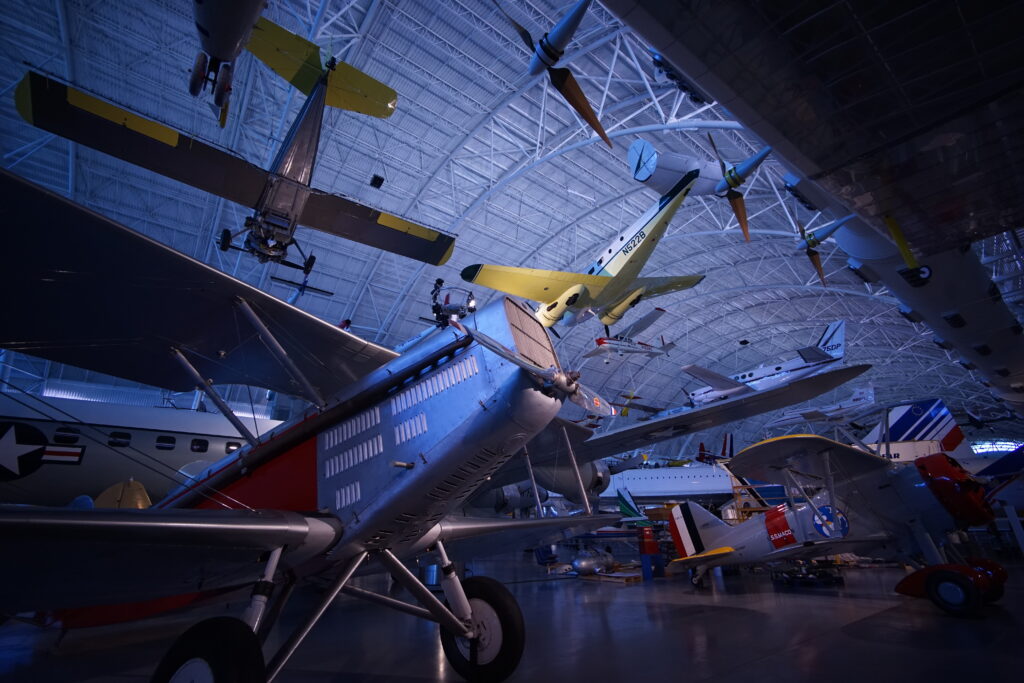
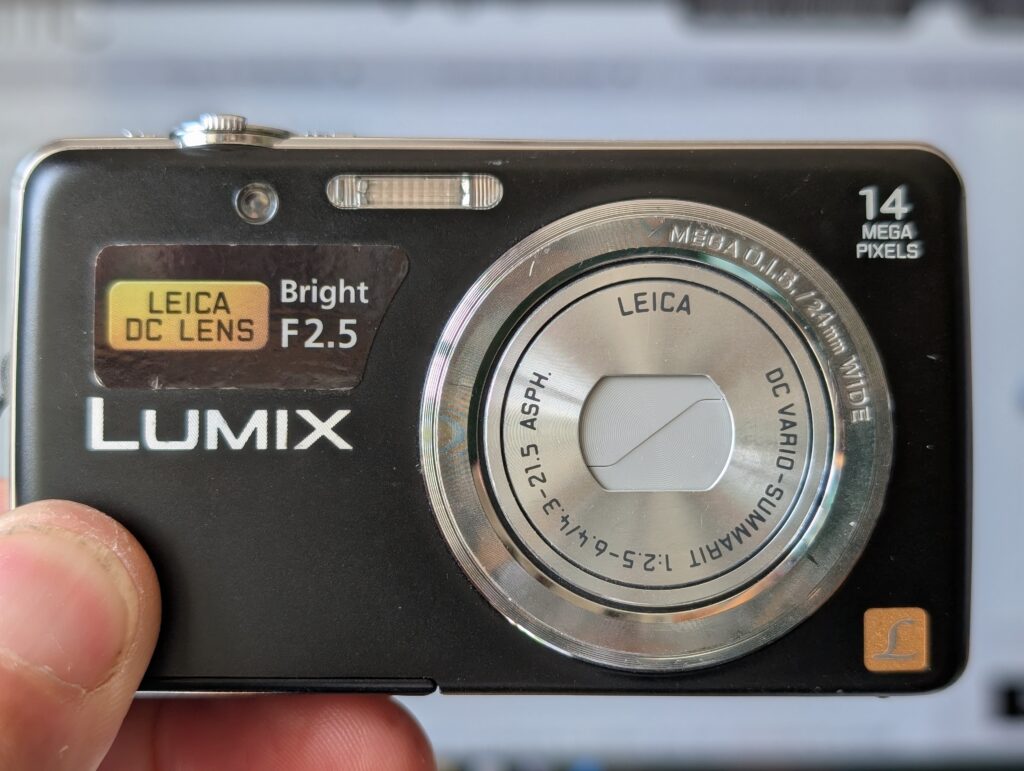
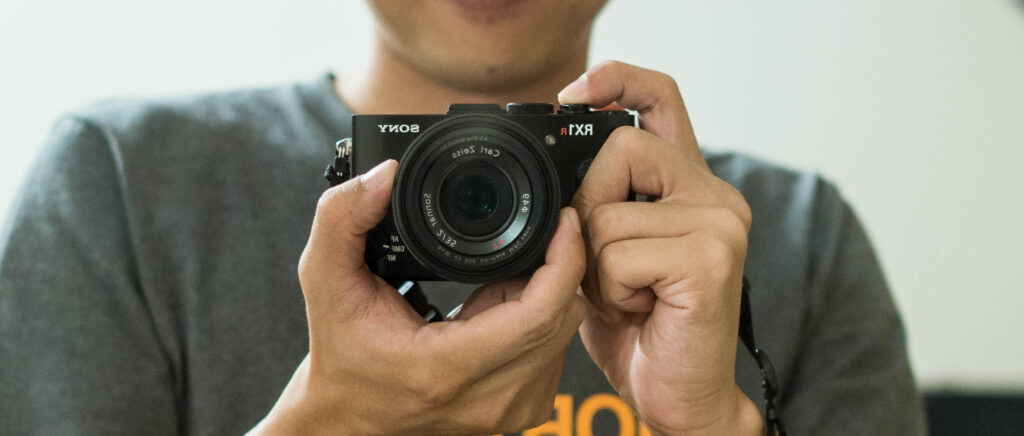
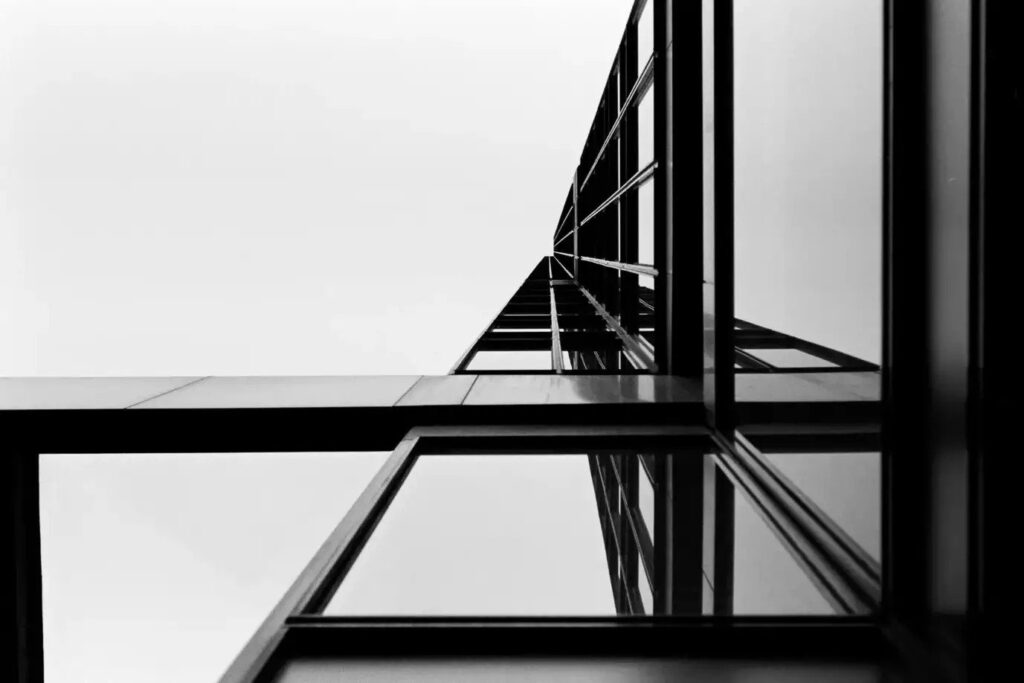
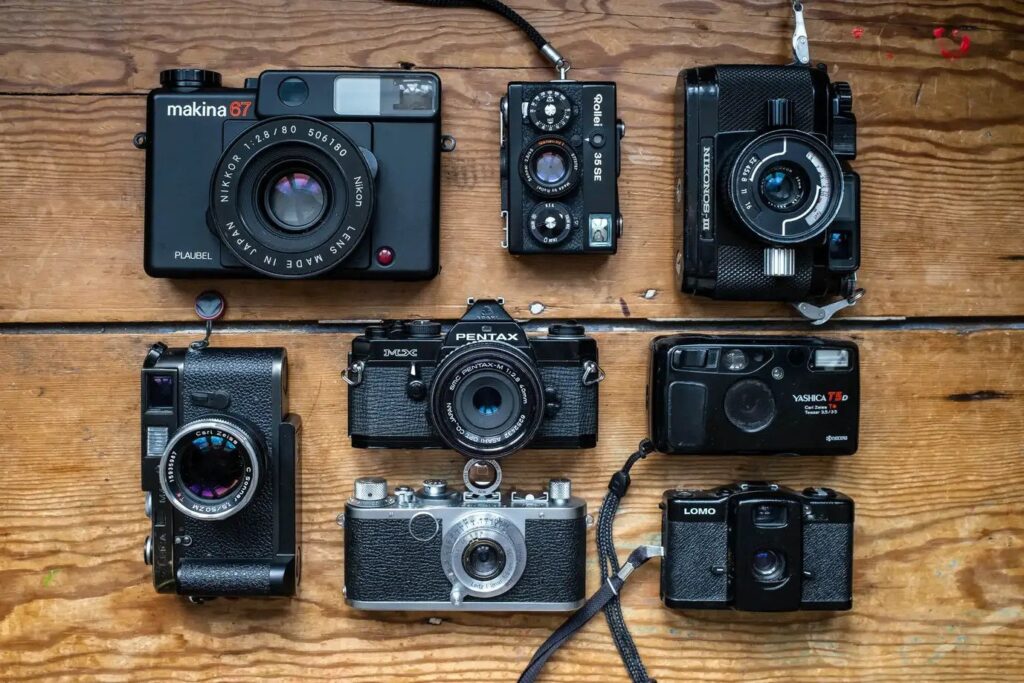
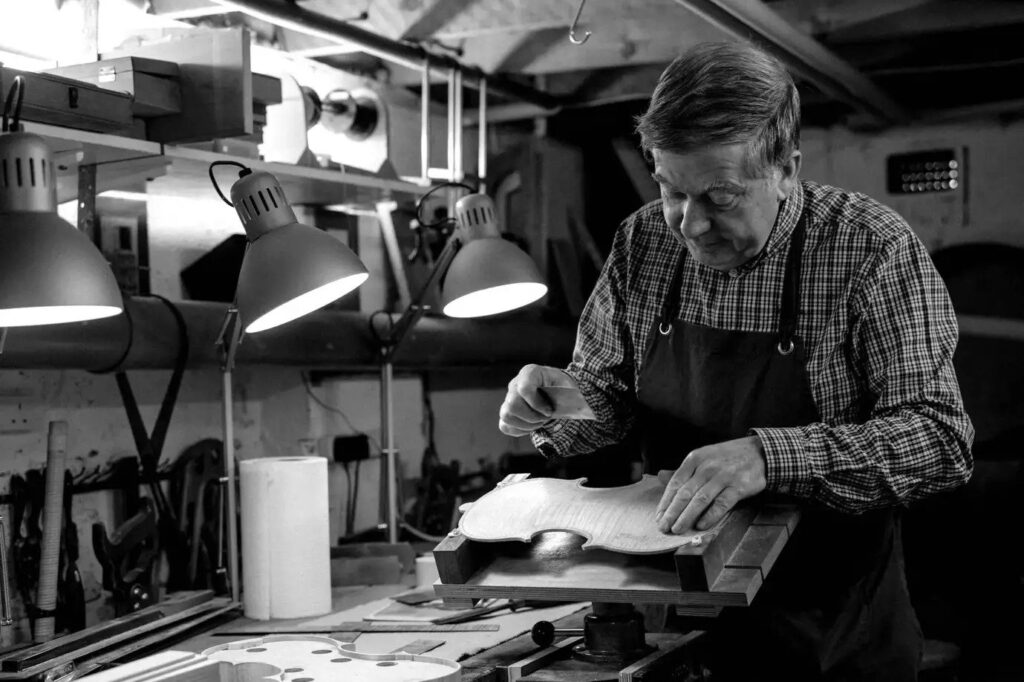
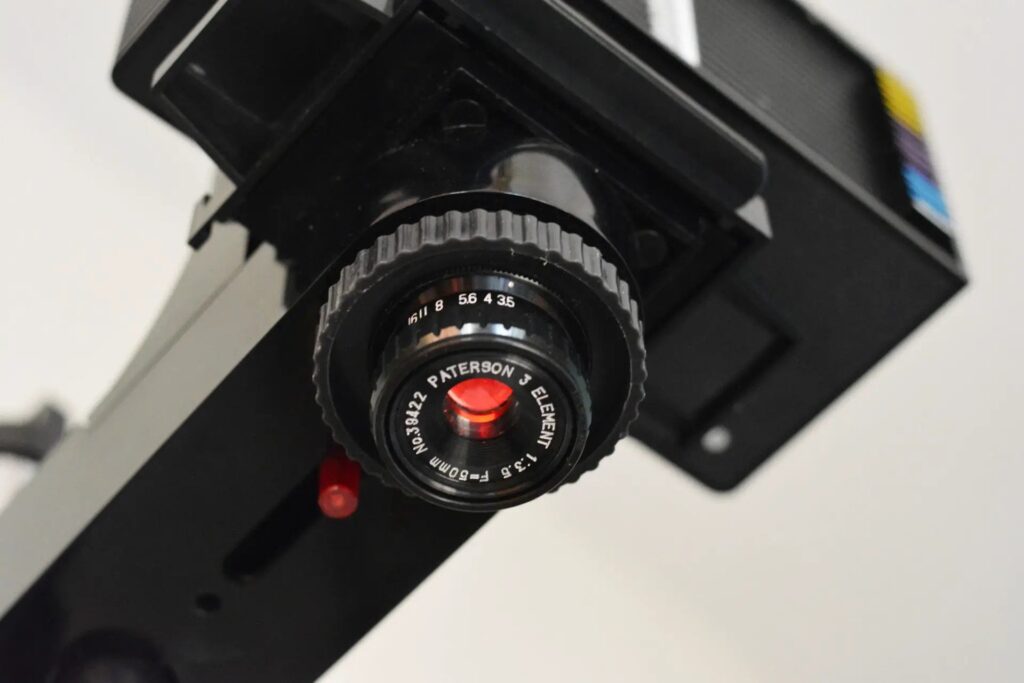
Comments
Bob Janes on In Search of Darkness and Light: Black & White Film Stocks, Part 5 – The Conclusion
Comment posted: 26/08/2025
One thing I note though - although you listed it at the beginning, you don't mention FP4 - does it not float your boat?
I wonder what processing these films received - Do some stocks do better in certain soups? Is it possible that the Lake Louise shots were processed in a different developer (presuming that they were processed at a similar time and at the same place..)
Comment posted: 26/08/2025
Christopher Welch on In Search of Darkness and Light: Black & White Film Stocks, Part 5 – The Conclusion
Comment posted: 26/08/2025
Comment posted: 26/08/2025
Geoff Chaplin on In Search of Darkness and Light: Black & White Film Stocks, Part 5 – The Conclusion
Comment posted: 26/08/2025
Comment posted: 26/08/2025
Comment posted: 26/08/2025
Comment posted: 26/08/2025
Keith Drysdale on In Search of Darkness and Light: Black & White Film Stocks, Part 5 – The Conclusion
Comment posted: 26/08/2025
Comment posted: 26/08/2025
Art Meripol on In Search of Darkness and Light: Black & White Film Stocks, Part 5 – The Conclusion
Comment posted: 26/08/2025
I will always love Tri-X. But after years of shooting digital and now casually returning to film I'm seeing what a huge difference the film stock makes. Your exploration will kept me from wasting time and money. Whatever I shoot these days will seldom be journalism. I'm looking for tonal fine grain and have landed mostly on Delta 100. I am still not shooting much film but expect to increase. I shoot with an M4P and a Mamiya C3 so not too dissimilar from the formats you're using. I've kept every one of your posts for quick referral and really look forward to trying out a few more of those you've checked out for us. Thanks for all your delightful work and lovely images.
Comment posted: 26/08/2025
Comment posted: 26/08/2025
Comment posted: 26/08/2025
Curtis Heikkinen on In Search of Darkness and Light: Black & White Film Stocks, Part 5 – The Conclusion
Comment posted: 26/08/2025
Comment posted: 26/08/2025
David Pauley on In Search of Darkness and Light: Black & White Film Stocks, Part 5 – The Conclusion
Comment posted: 26/08/2025
This was a fantastic conclusion to a wonderful series. Before reading the text I looked at each photo and in addition to being blown away by the beauty of your images was quite taken by the different looks the various film stocks impart. As you know I am by dint of habit and perhaps laziness mostly a Tri-X and HP5 shooter, but I think this may change as a result of reading your opus. The framework you've suggested for grouping the various films makes wonderful sense. I'm especially interested in the slower speed films you sampled. Like carrying along different camera bodies or lenses on an outing, your articles make a solid case for having a mix of emulsions at hand. (For me til now this has been mostly restricted to b/w vs C41). Finally when you're ready for new rabbit holes I hope you will sample and write about different developers. I had a year-long infatuation with PMK Pyrocat but after some disappointing rolls have become enamored with Kodak HC-110. Go figure! There are also ecological considerations involved with developer choices as some market themselves as environmentally friendly (and some such as Caffenol, a home made brew, actually are). Thank you again for this wonderfully engaging and generous project! David
Comment posted: 26/08/2025
Gary Smith on In Search of Darkness and Light: Black & White Film Stocks, Part 5 – The Conclusion
Comment posted: 26/08/2025
My first rolls of b&w were HP5+ after which I reverted to Tri-X. I went with Fomapan 100 for the 4 x 5 and now I have two rolls of Fp4 in 2 different cameras (due to the use of Fp4 in Dave's article of 15 AUG). I re-started developing using Cinestill's Df-96 which didn't do very well on the Fomapan. I'm now back to using Kodak-branded chemistry: D-76.
While you mentioned your friend's lab, you didn't explain his chemistry or if you did all of your roll there.
By the way, I love the shots you took using the Ilford Ortho Plus 80. I may need to give that a shot.
Thanks for your great series, Scott!
Comment posted: 26/08/2025
Comment posted: 26/08/2025
Comment posted: 26/08/2025
Jeffery Luhn on In Search of Darkness and Light: Black & White Film Stocks, Part 5 – The Conclusion
Comment posted: 27/08/2025
Thanks for the great photos and informative text. When looking at your photos on my big screen Mac, they all look good. Great compositions. The differences in grain and sharpness are only evident when I zoom in, and even then I don't see any examples that are objectionable. I'd really like to know which developers were used.
In my experience, I've found that sticking to one or two quality films is best for consistency. I change developers if I want a particular 'character' for one shooting condition or another. My first choice for medium format is HP5+ in HC-110 for general shooting. When the scenes are high contrast, I'll shoot at ISO 200 and use PYRO CMK to preserve highlights and deliver better shadow details. If I want a bit more speed and grain, Rodinal is my choice. These choices also apply to 4x5 HP5.
For 35mm I keep going back to Ilford XP2. Using C-41 is a bit tricky because of the high temperatures needed, but once that's dialed in, the process is fast, cheap, and consistent. Ilford FP4 in HC-110 also satisfies my needs for finer grain, but I'll be trying slower films in the future. I was a Panatomic X fan for years. It's hard to beat that film when shooting with strobes in the studio.
What I'm getting at is this: I really appreciate your work to present various film stocks. I read each submission a couple of times, but I didn't see a compelling reason to venture away from combinations I have dialed in over the years. Where is my lack of curiosity and adventure? Gone, I guess!
What I really want to know is what developers were used with all your films. Your results were superb with every film, and of course your camera choices alleviated any weirdness. PRAY TELL: WHAT DEVELOPERS WERE USED? Thank you in advance!!! Sincerely, Jeffery Luhn
Comment posted: 27/08/2025
Comment posted: 27/08/2025
Comment posted: 27/08/2025
Comment posted: 27/08/2025
Ibraar Hussain on In Search of Darkness and Light: Black & White Film Stocks, Part 5 – The Conclusion
Comment posted: 27/08/2025
I’d like to see you try the same film stocks with your own choice of developer as I presume you’re using a lab. You’ll be surprised at the control and consistency you’ll achieve with that.
I’m also curious to know of your ‘digital darkroom’ methods used after receiving the scans.
I’ve written up the September newsletter and had to feature your in search of darkness and light in it.
Finally I wanted to know whether years in the movie industry, cinema and contact with cinematographers has had a lot of impact on your vision and style ?
Thanks again my friend
Comment posted: 27/08/2025
Comment posted: 27/08/2025
Comment posted: 27/08/2025
Comment posted: 27/08/2025
Leon Winnert on In Search of Darkness and Light: Black & White Film Stocks, Part 5 – The Conclusion
Comment posted: 27/08/2025
Great series, very informative and lots of great shots. Your results have given me some ideas for film stock to use. Back in the 80s I used the Tri-X / D76 combo. At that time an earlier everybody, all the names, were using that combo. It was the thing to do.
Not only that D76 had been made for Tri-X and was seen by most at the time as the perfect developer. Correct me if I wrong but I believe both were originally created for the motion picture industry.
Since I have reconnected with film photography I have been using HP5 and XP2. Quite satisfied with the results. HP5 developed in Ilfosol 3. Well that is what my Lab Technician tells me he uses. (BTW Lab Technician = my Son). Have not tried Tri-X since reconnecting. It’s a cost thing. A bit more expensive than HP5.
As I said at the start of this post you have given me some ideas. Namely Delta 400. Shot a couple of rolls pleasing results. Cheapest place I have found for purchasing it is Amazon £100 for 10 rolls. As a bulk buy deal.
The Iford Ortho looks really lovely. Will give that a go in the future. Just now am in the process of running a test roll of SFX200.
Comment posted: 27/08/2025
Comment posted: 27/08/2025
Comment posted: 27/08/2025